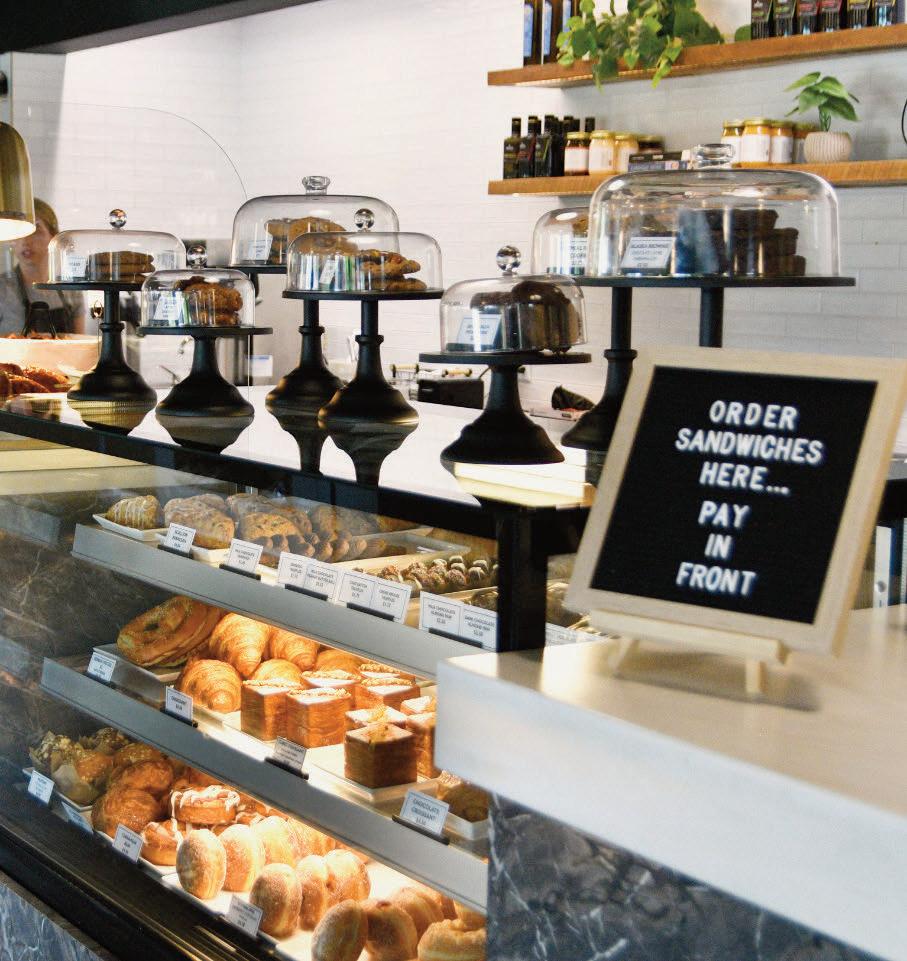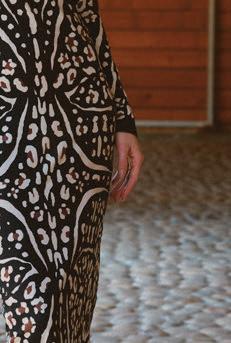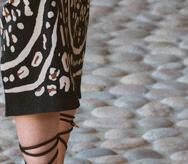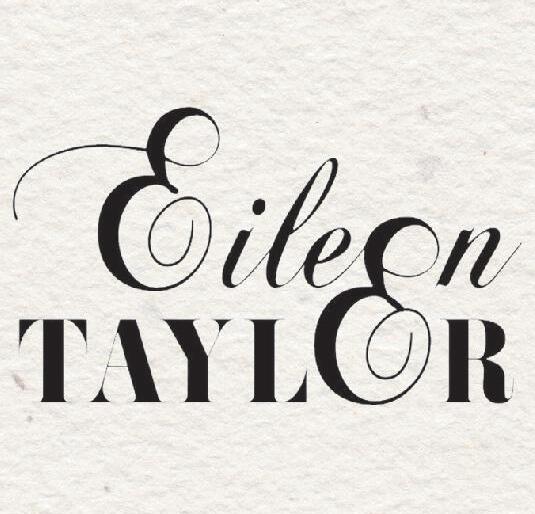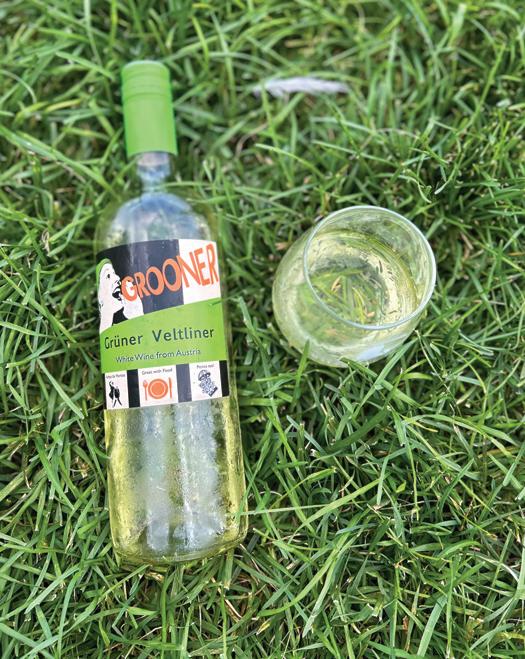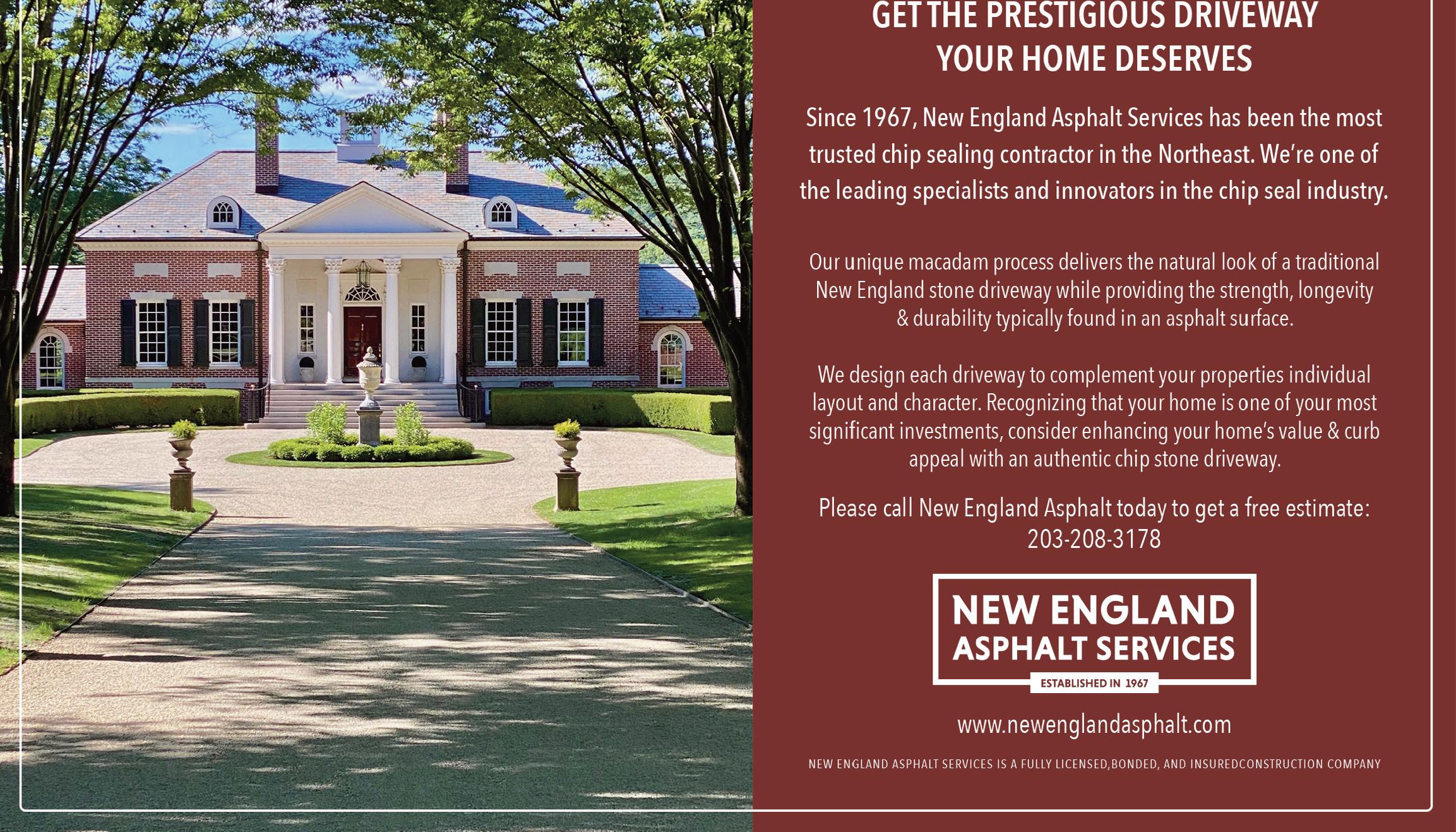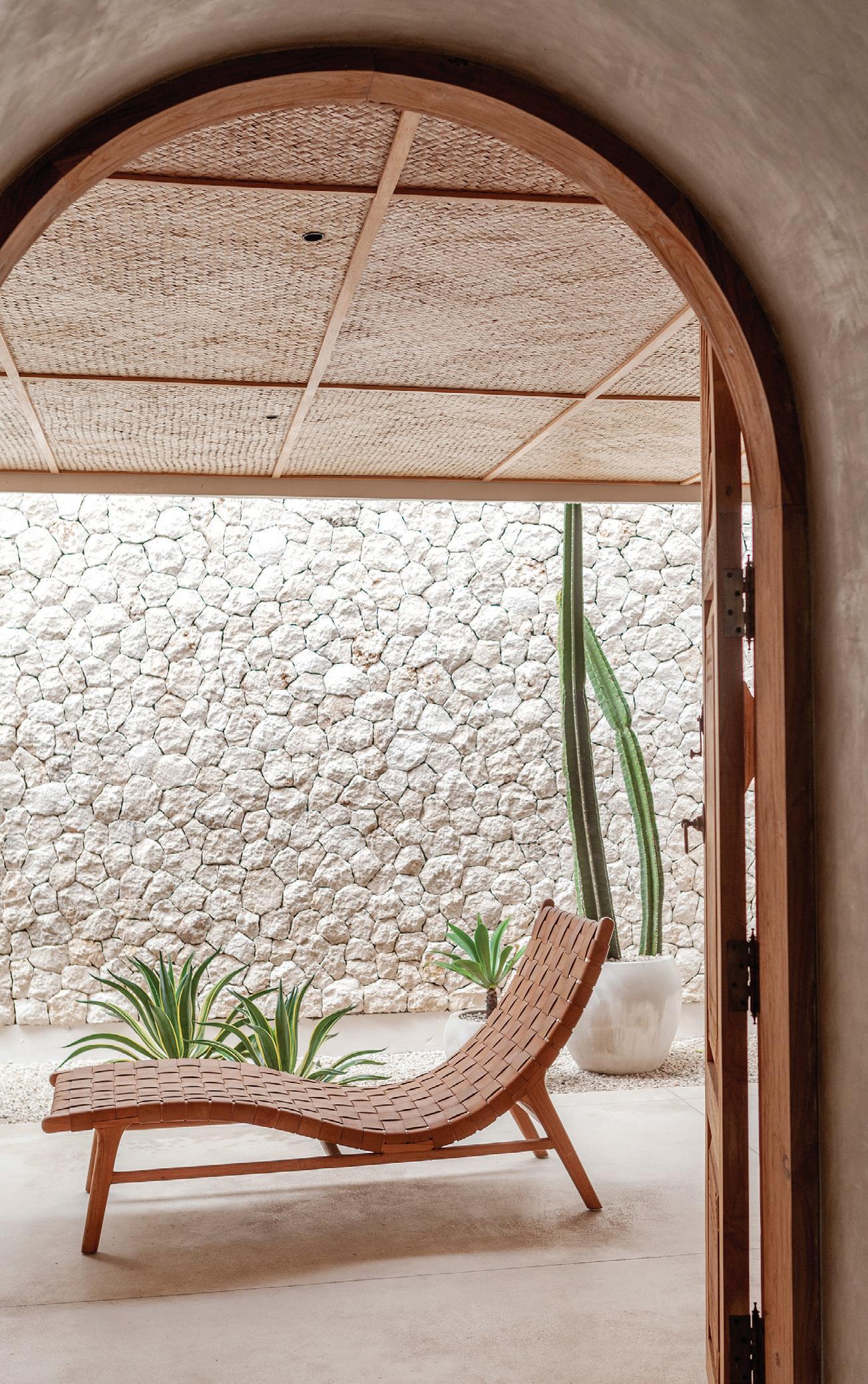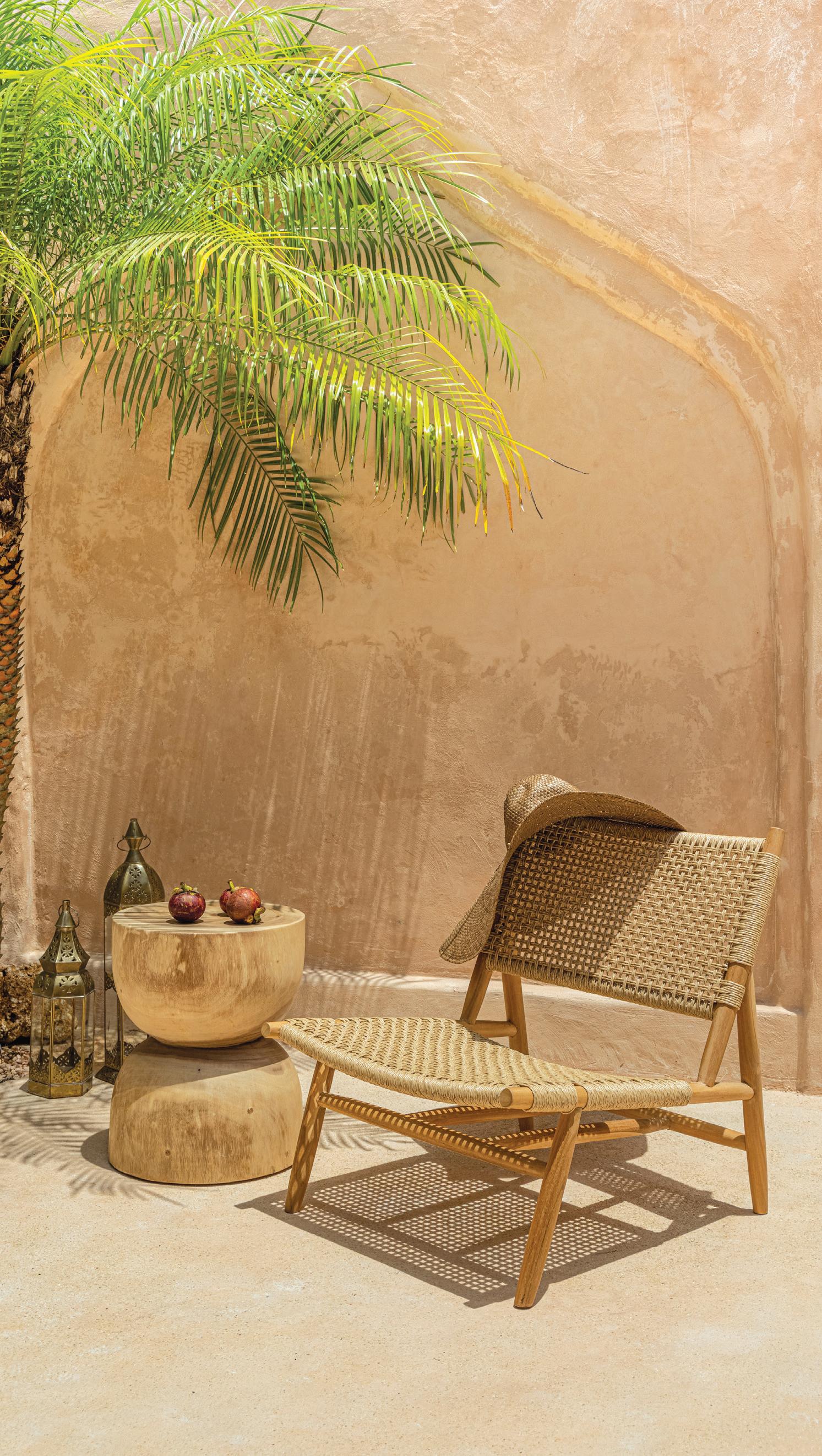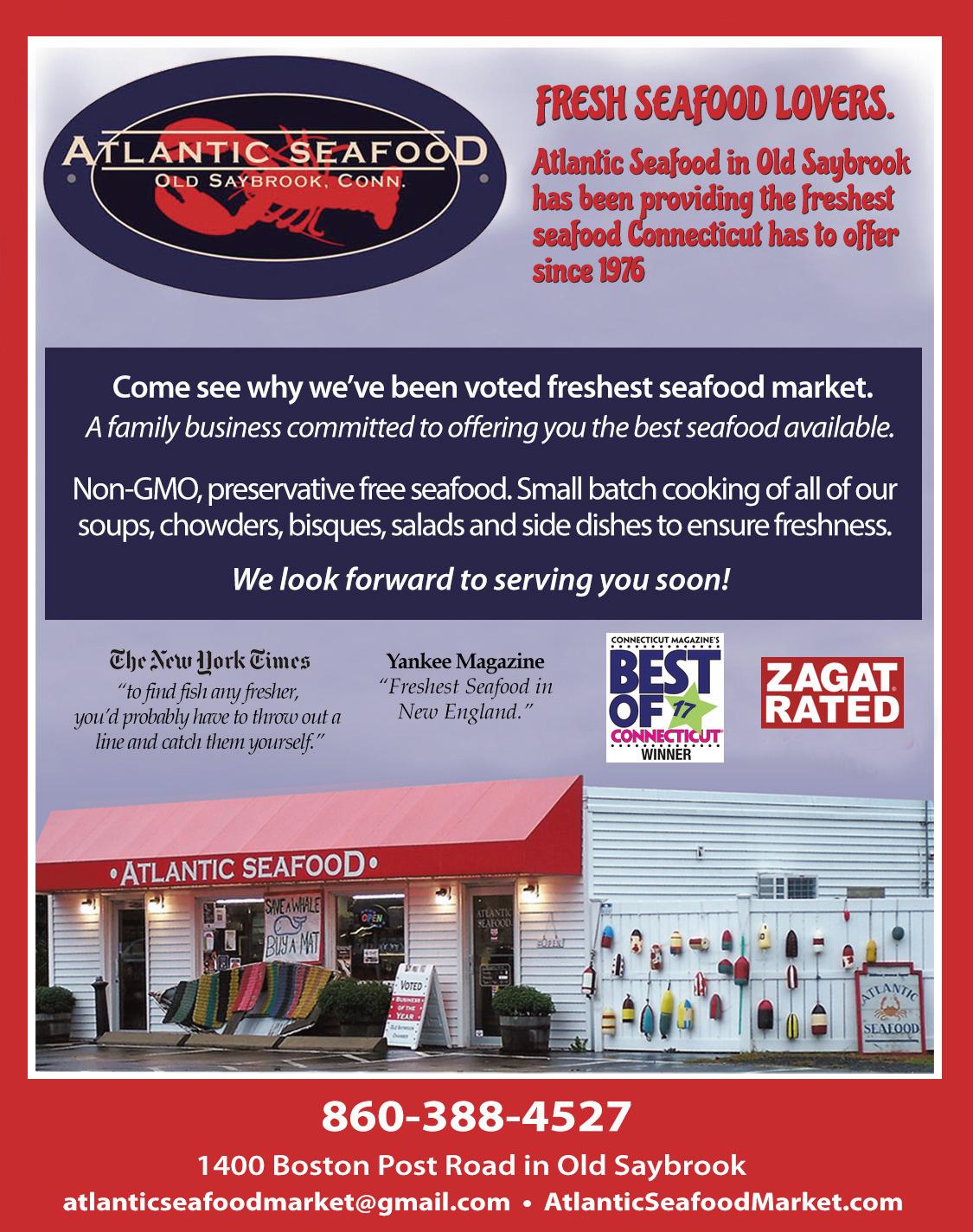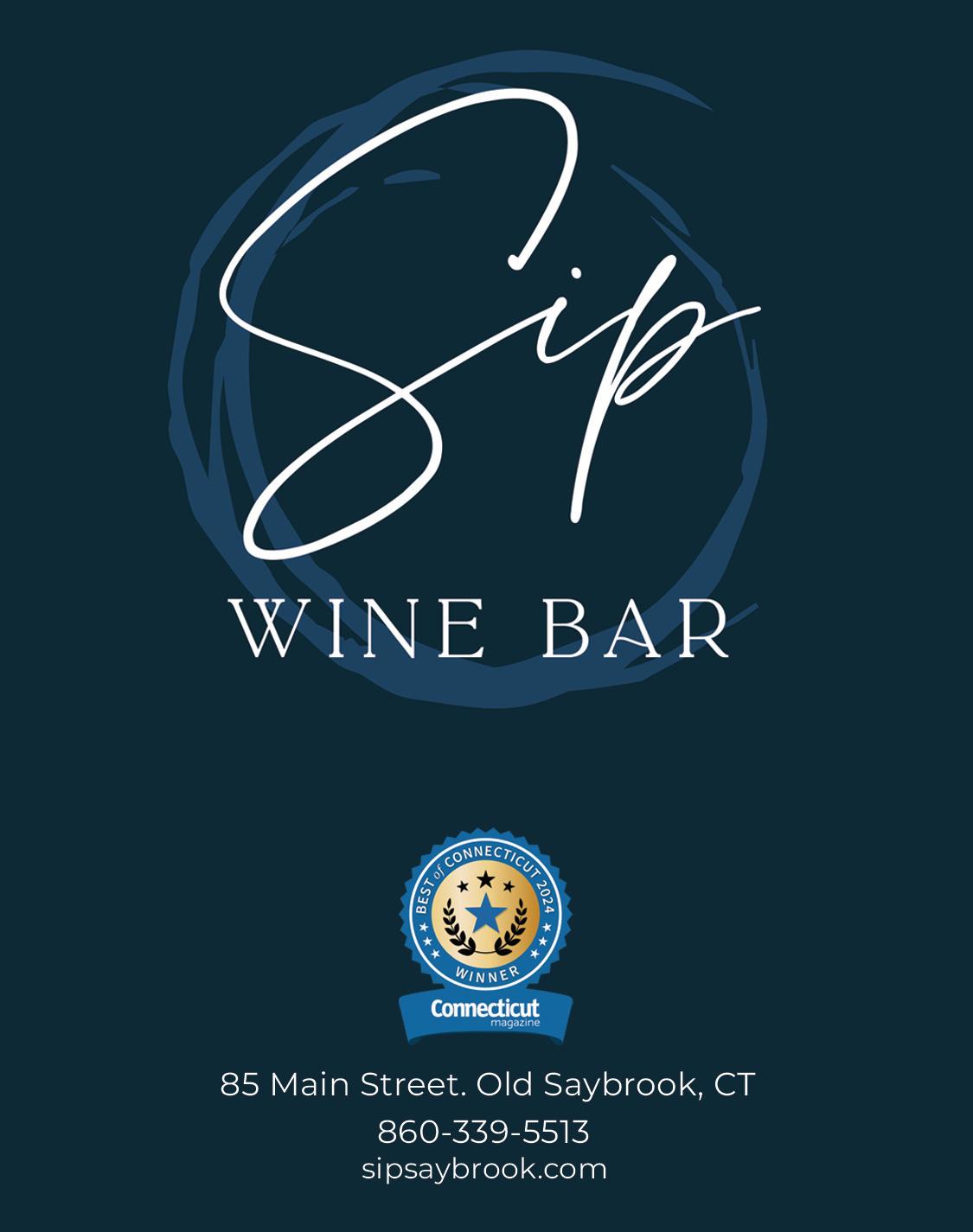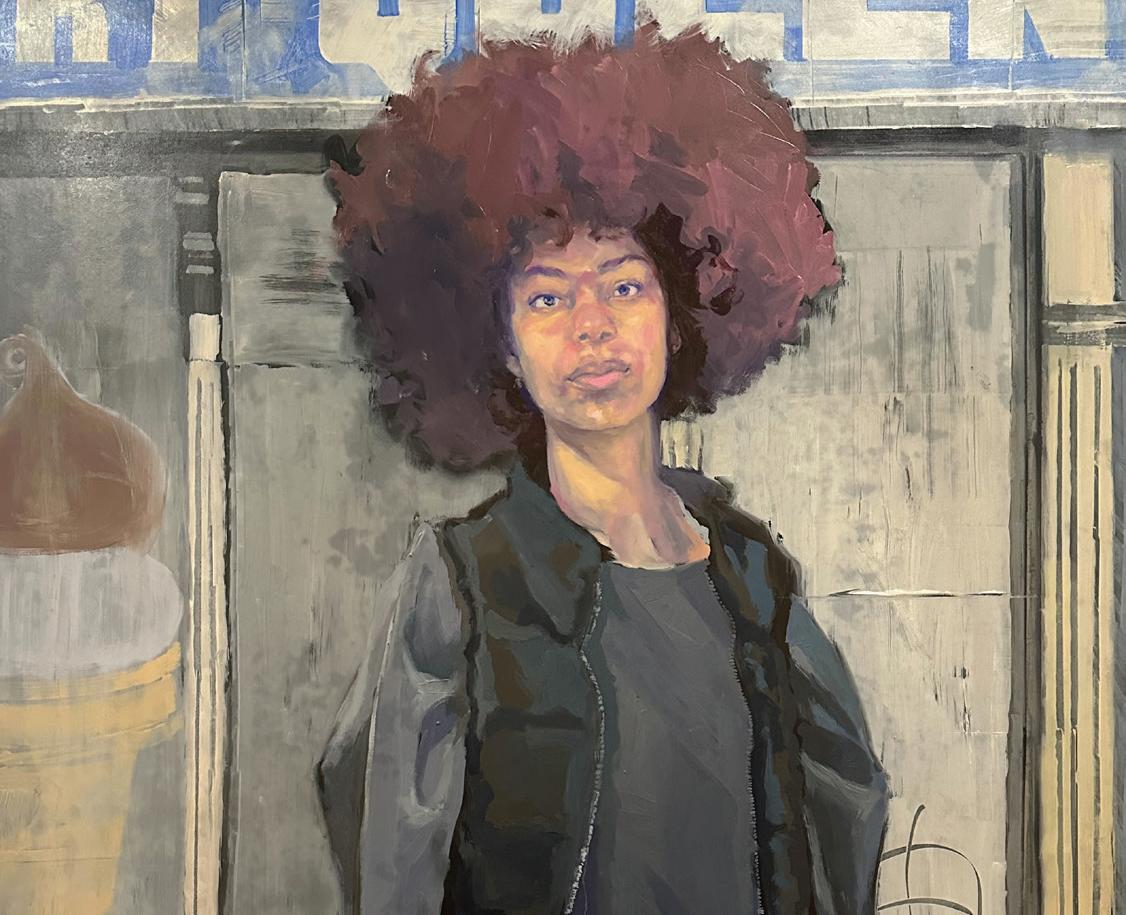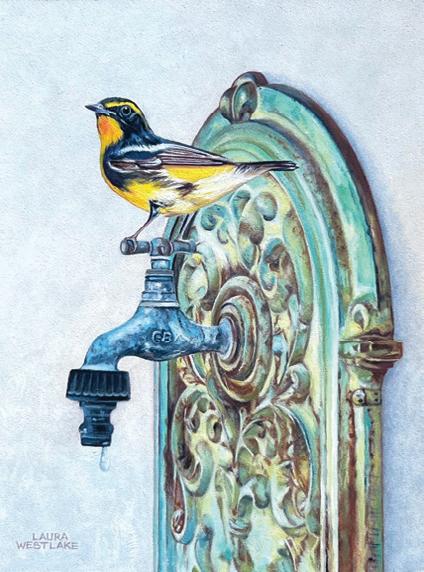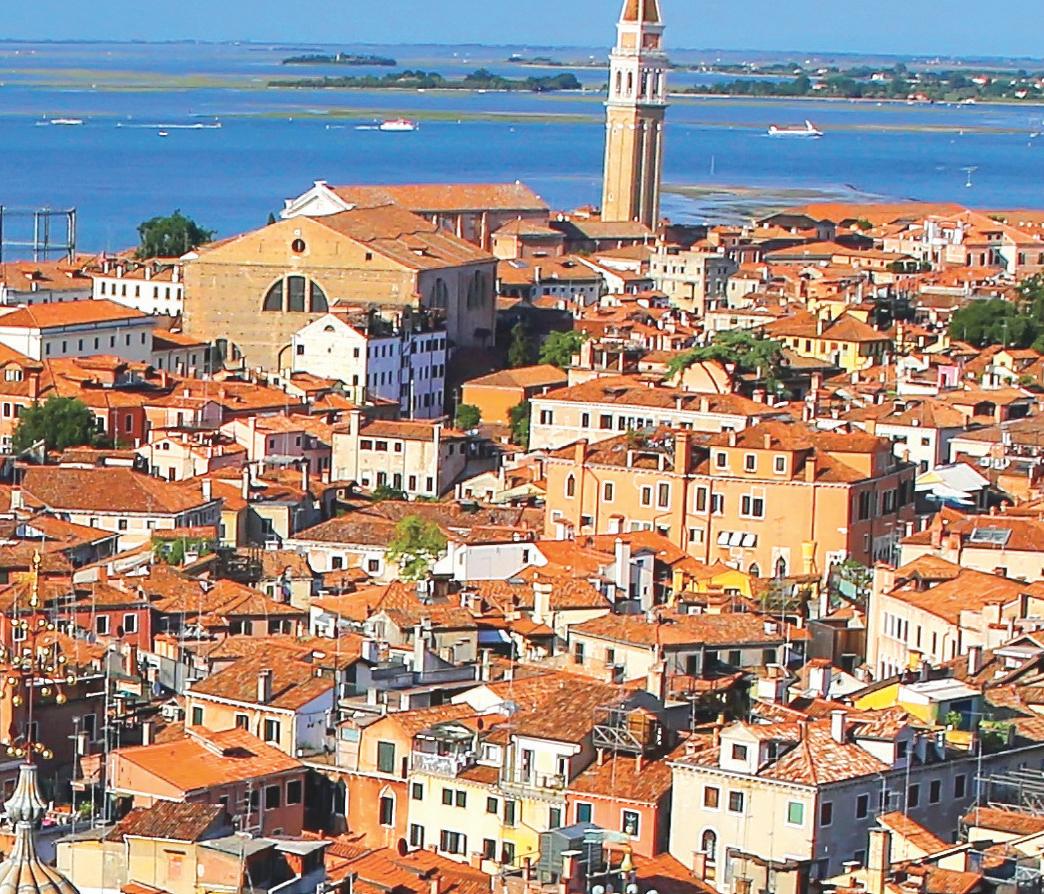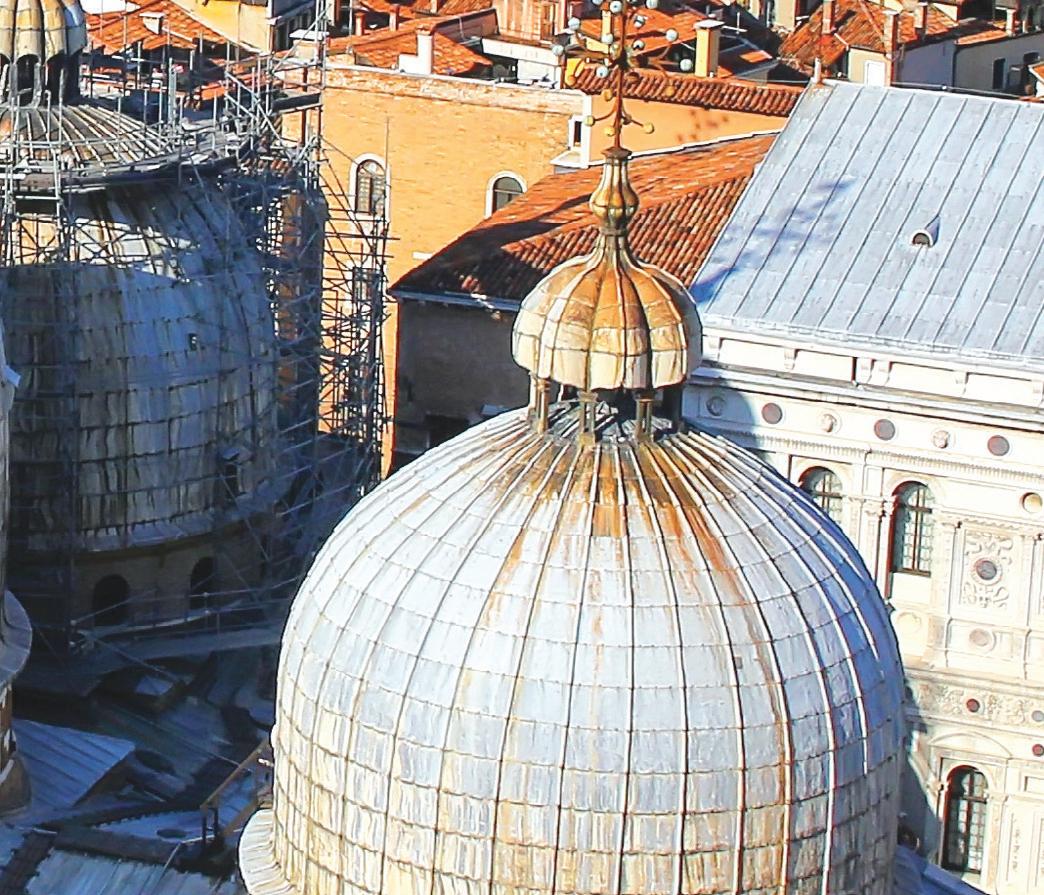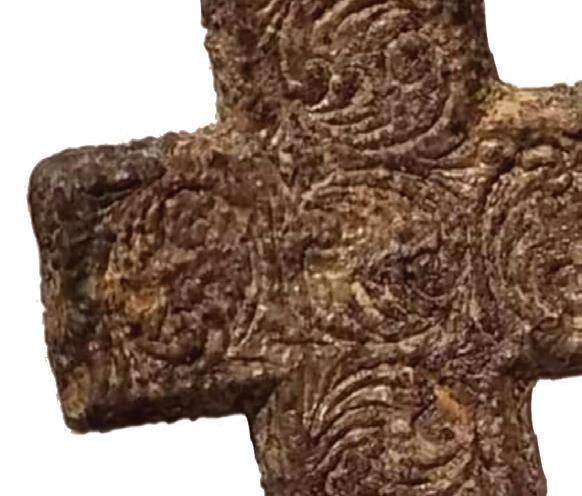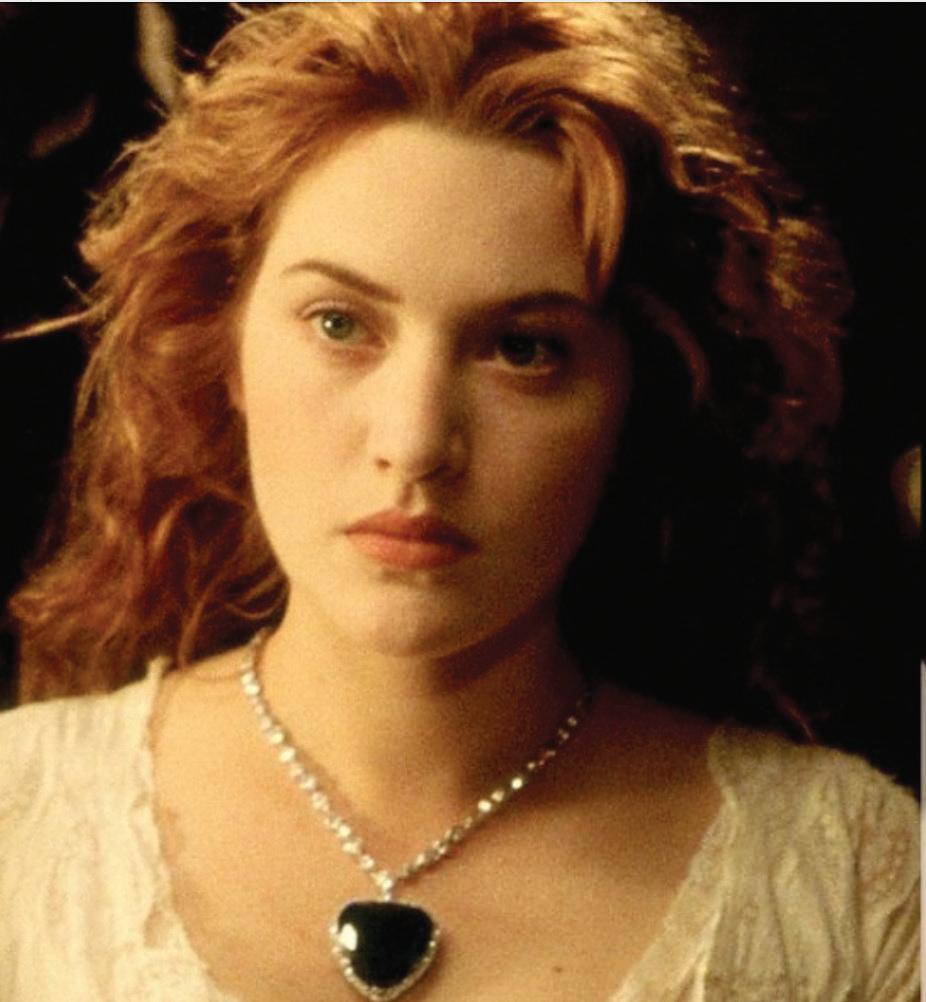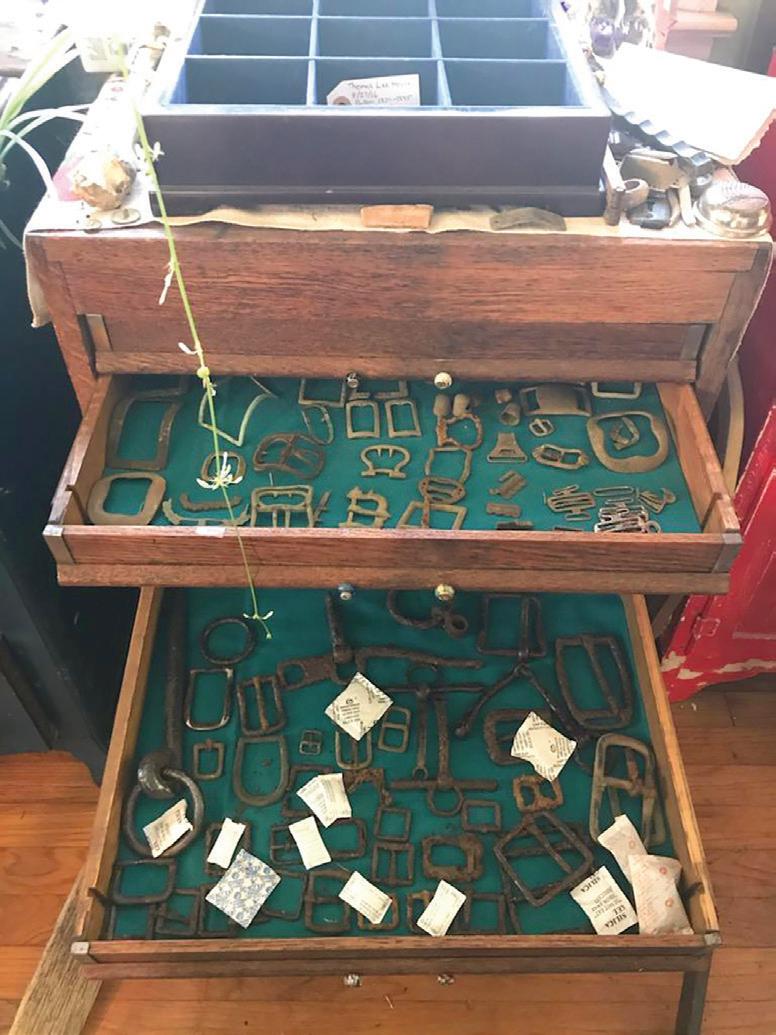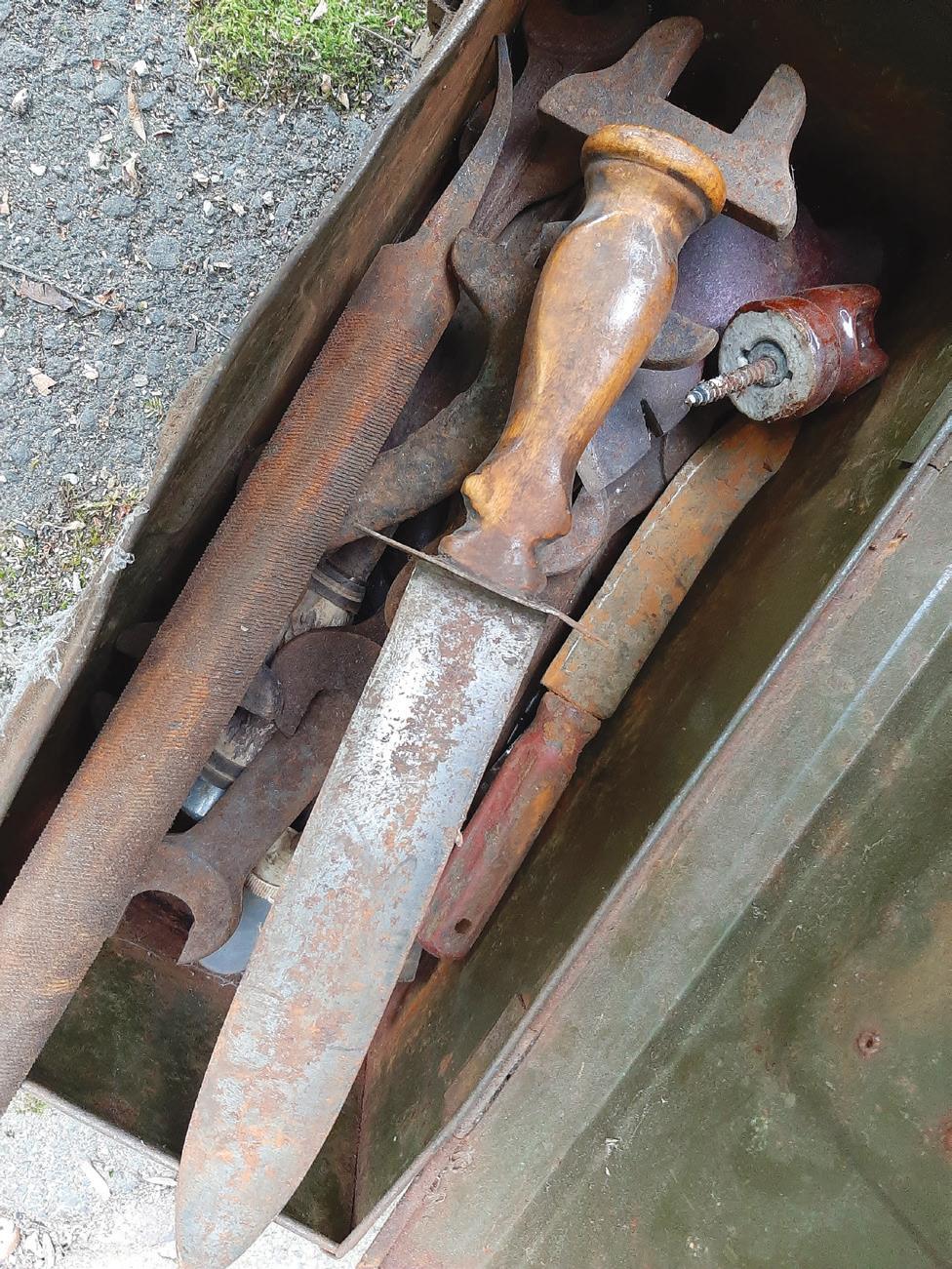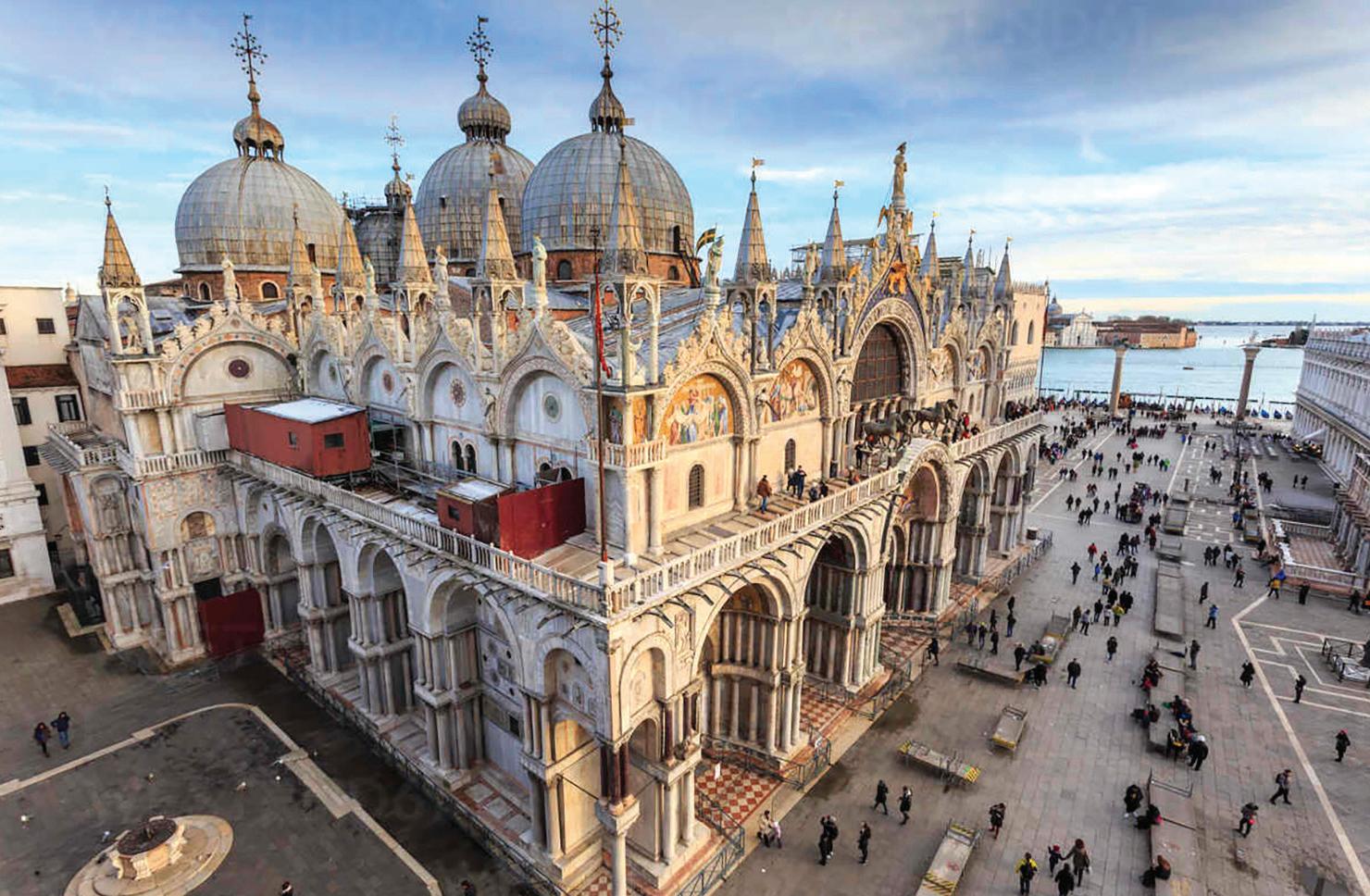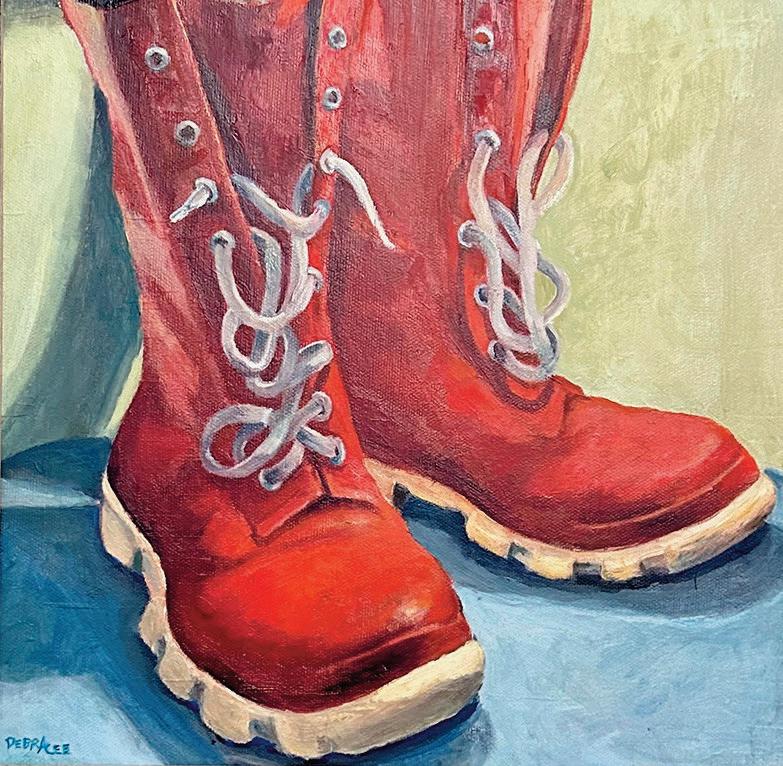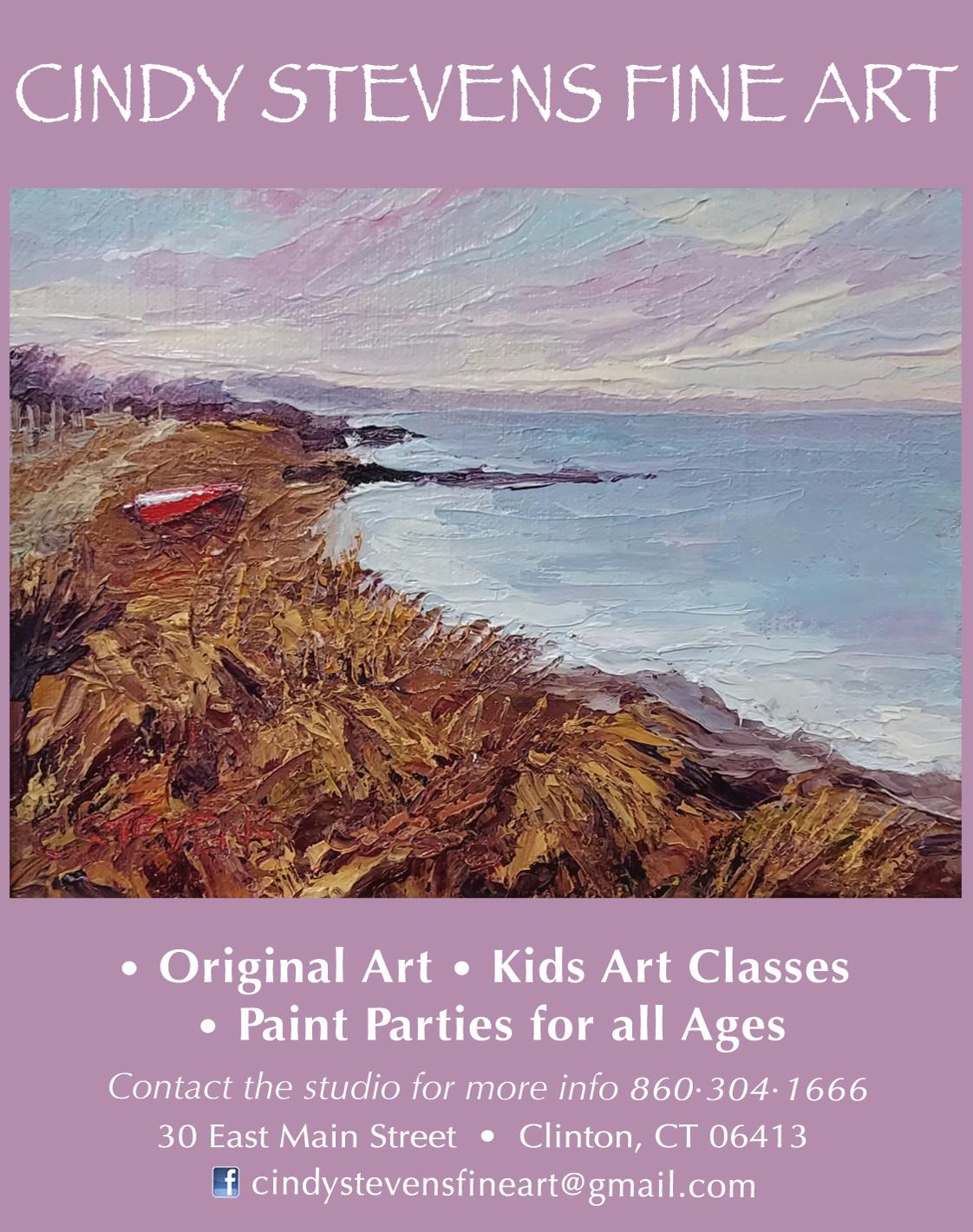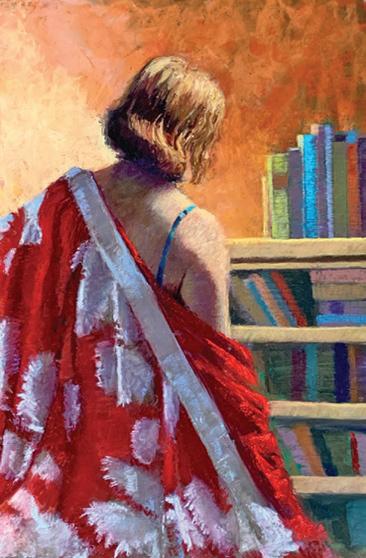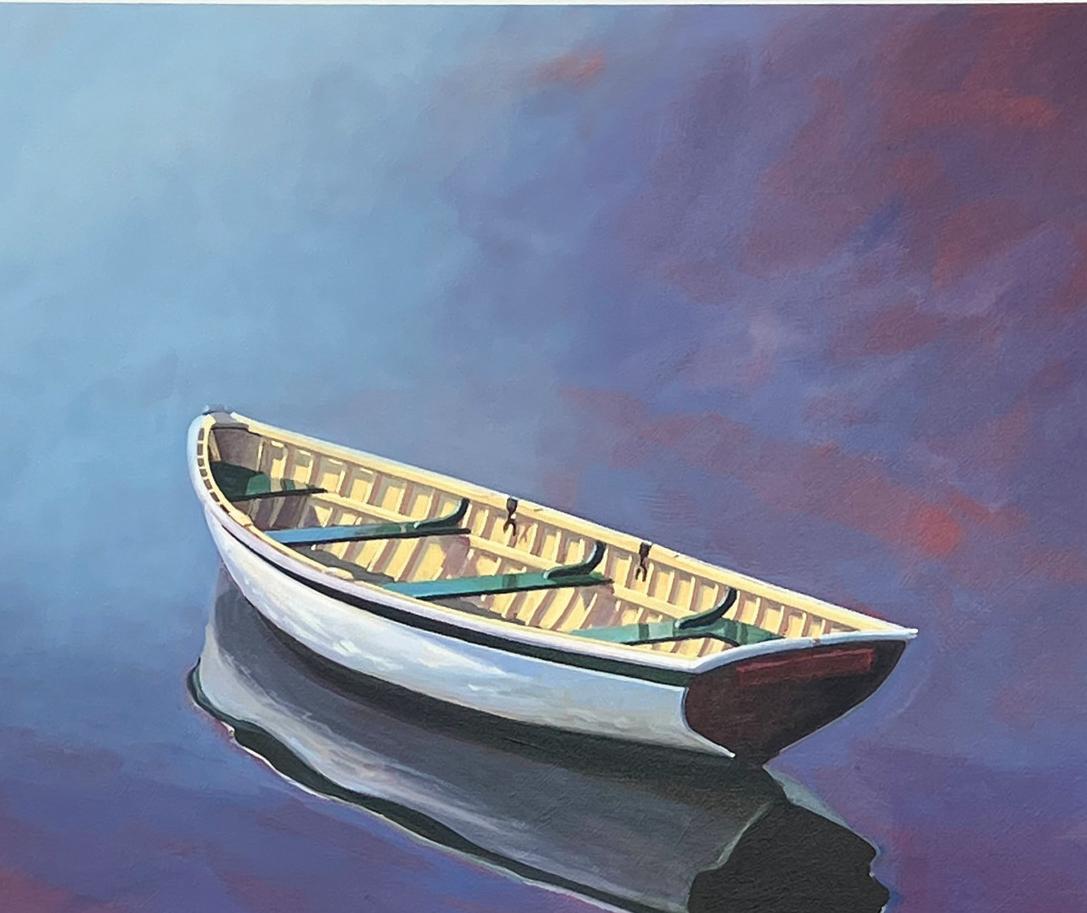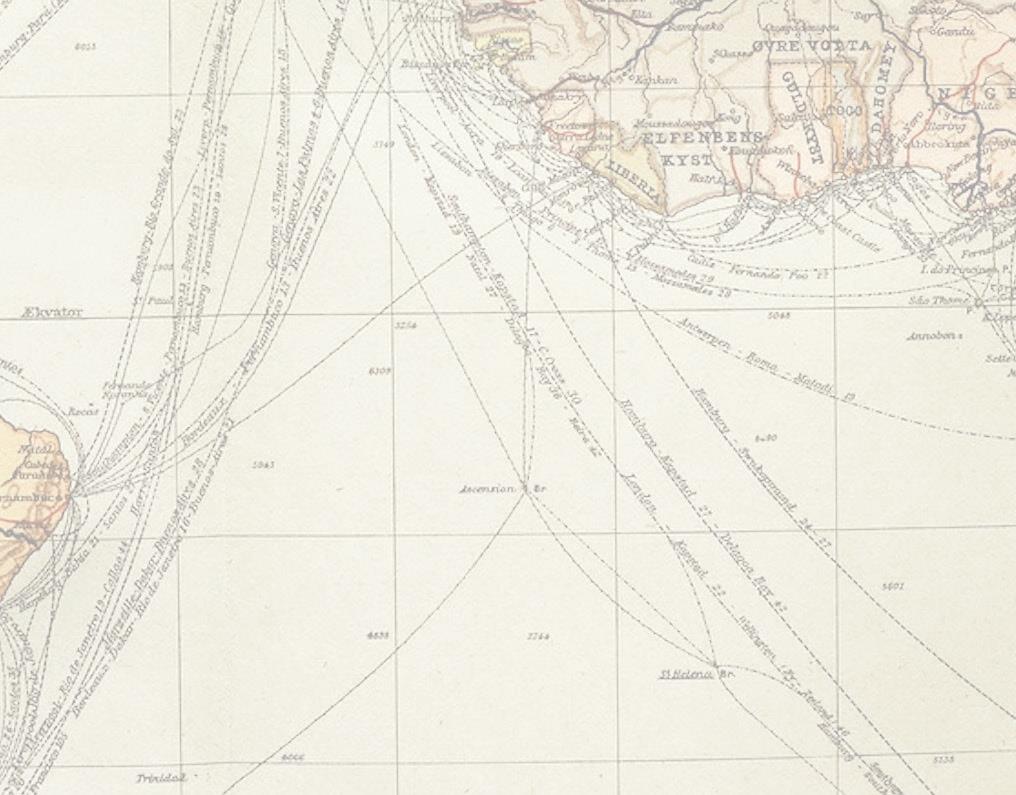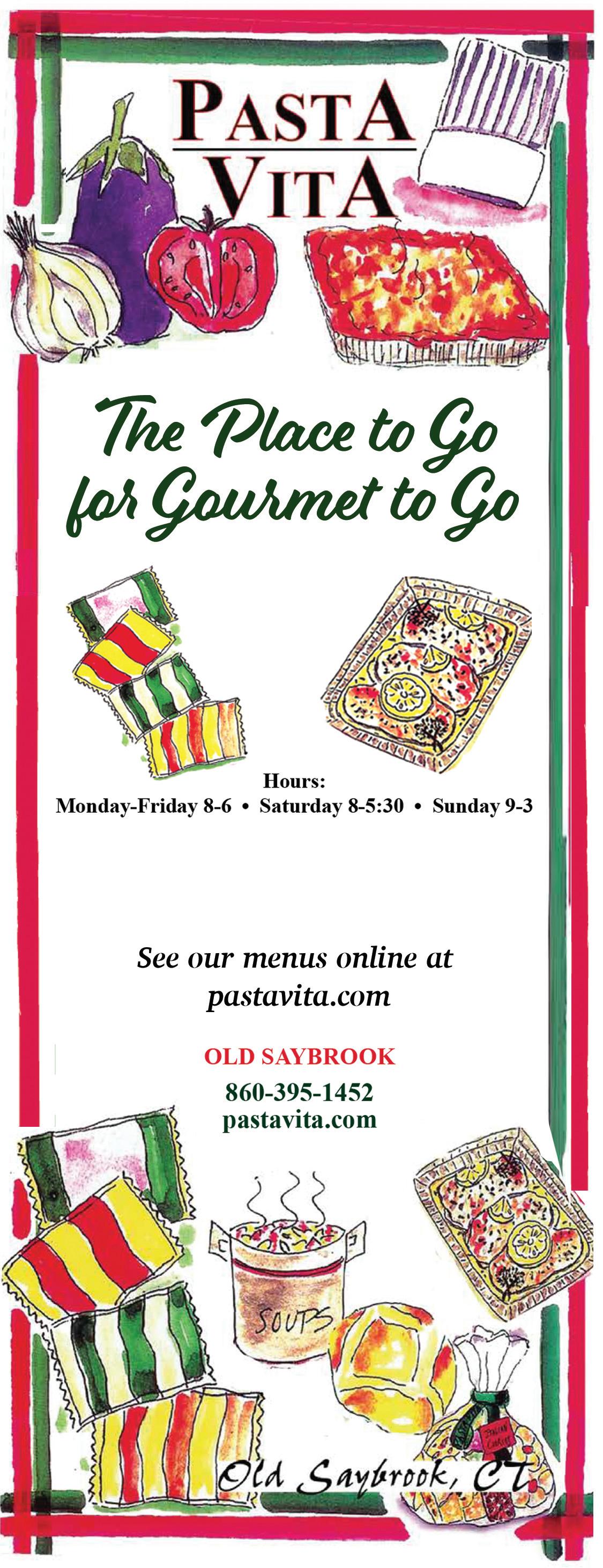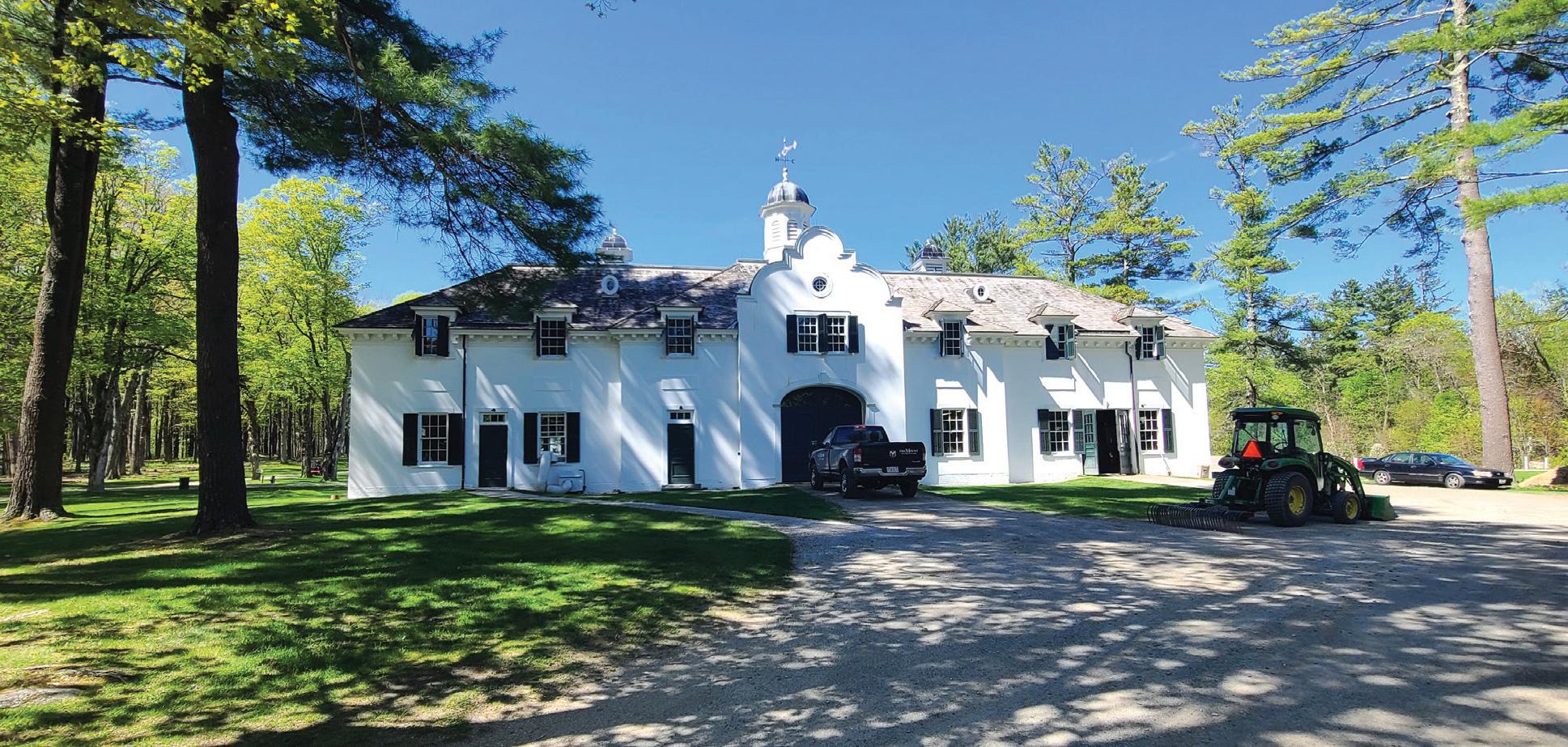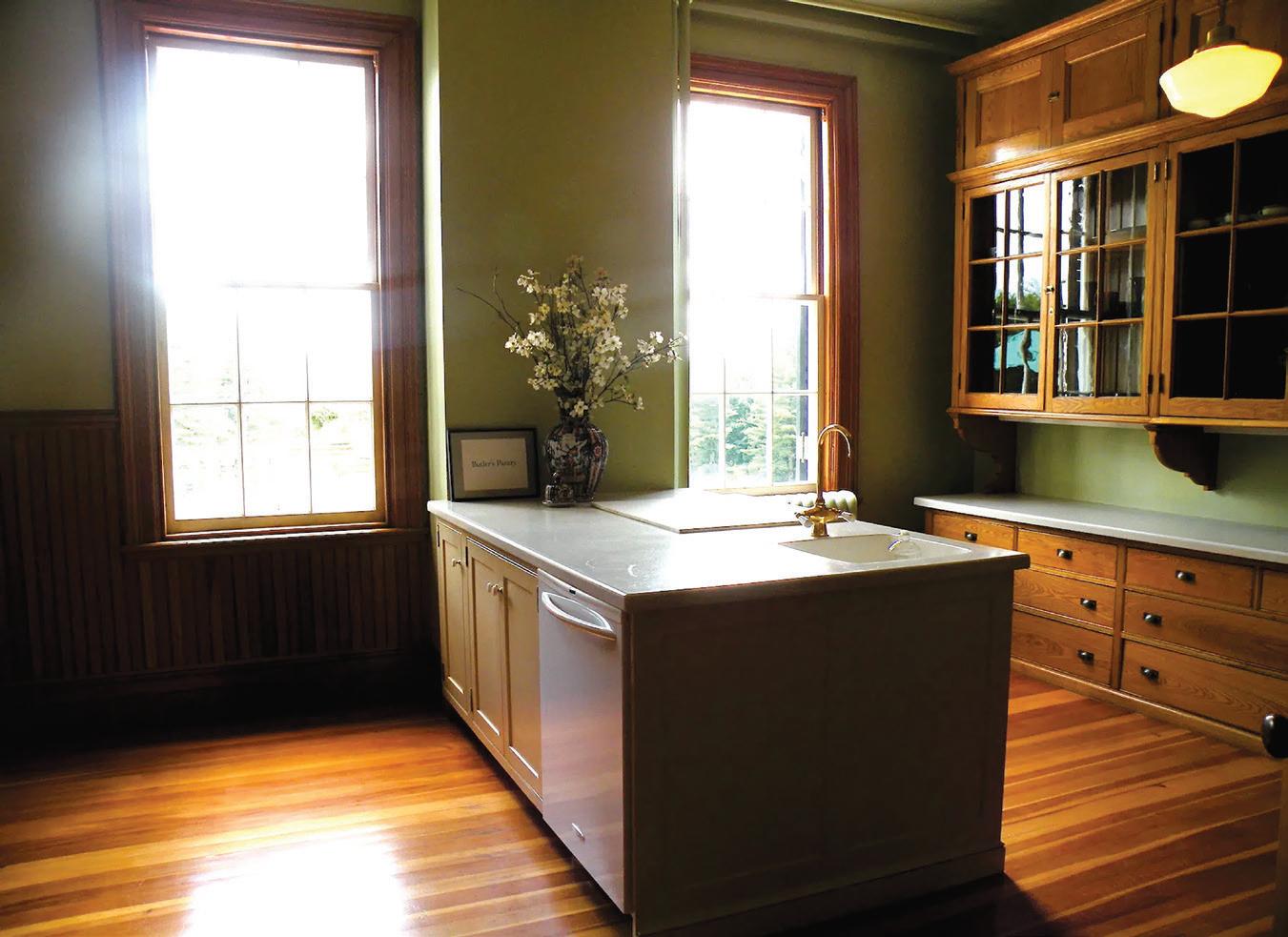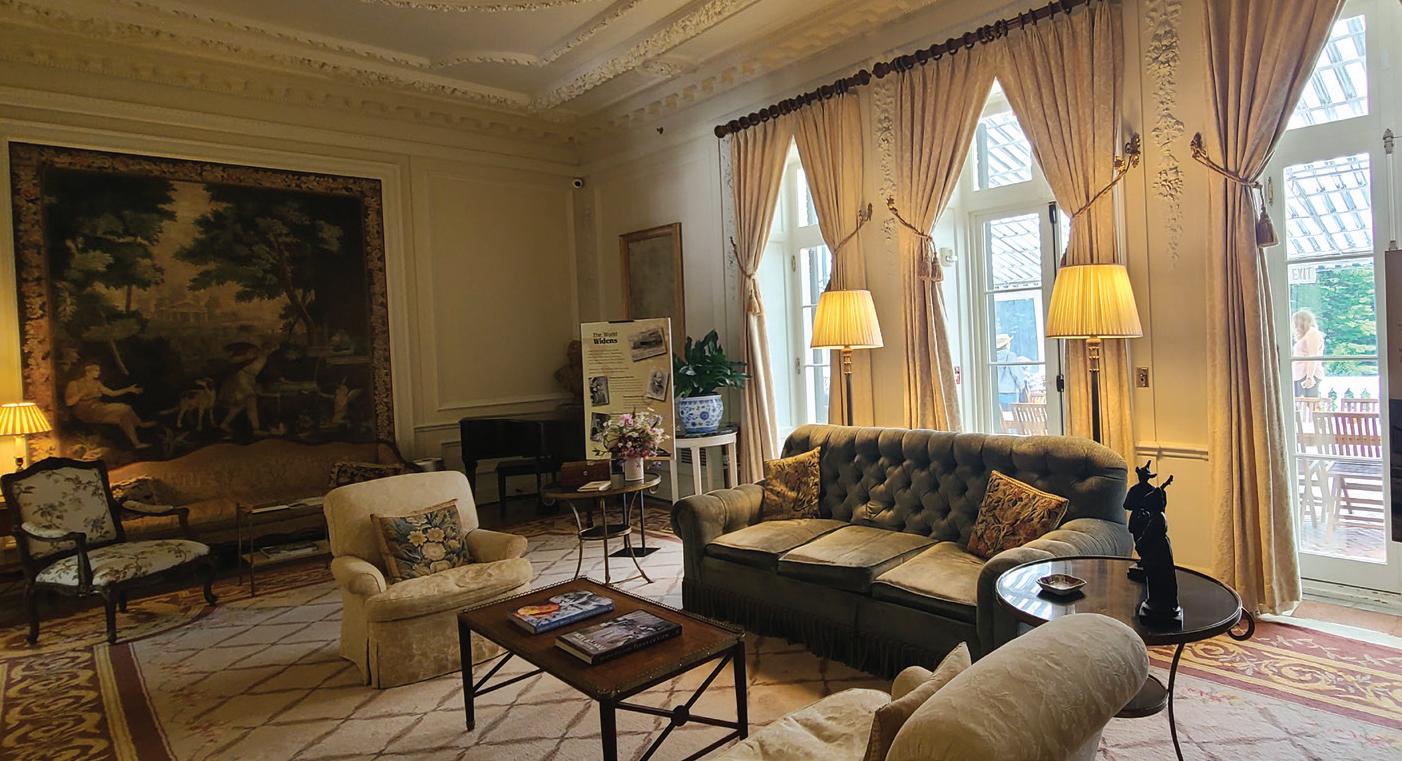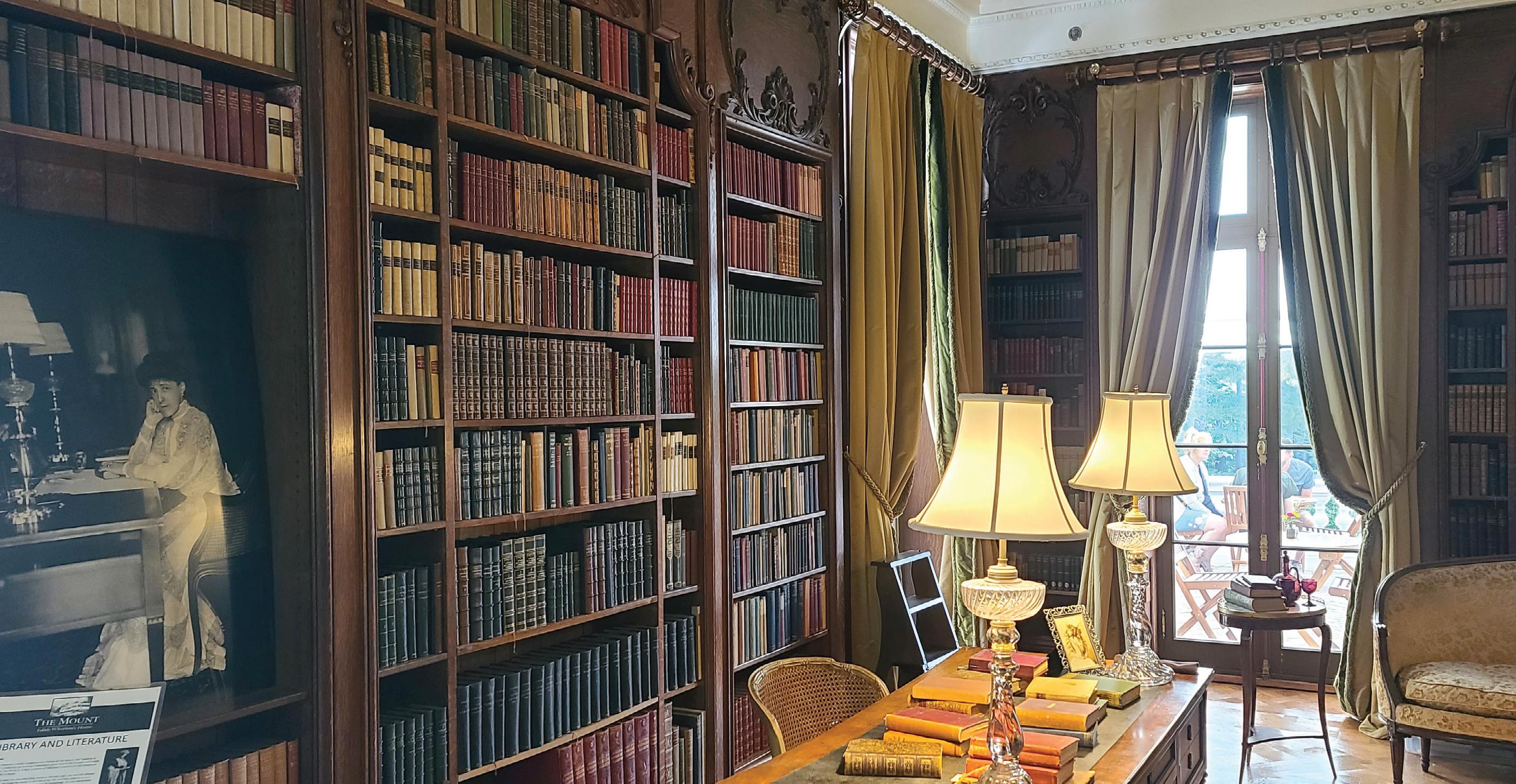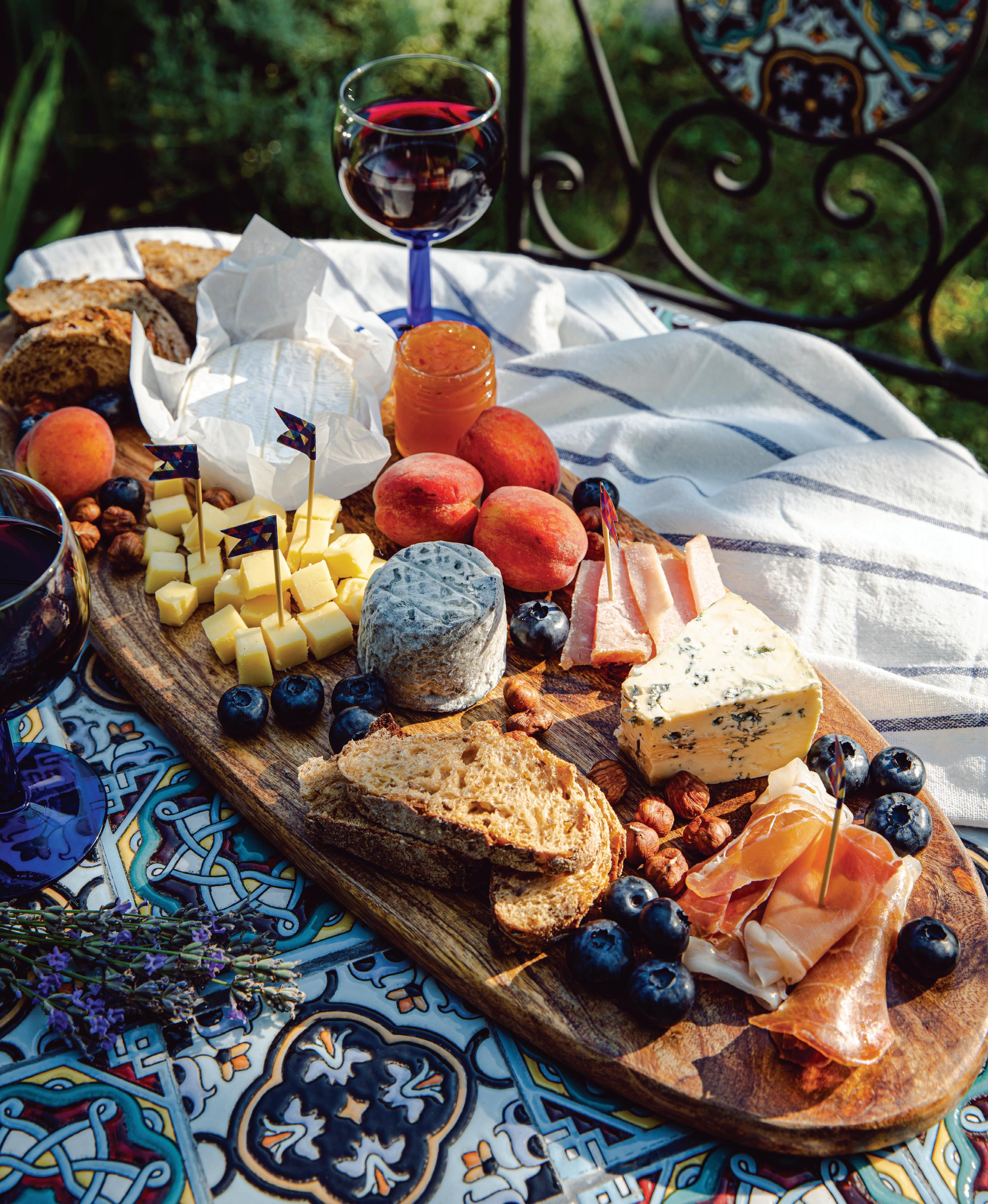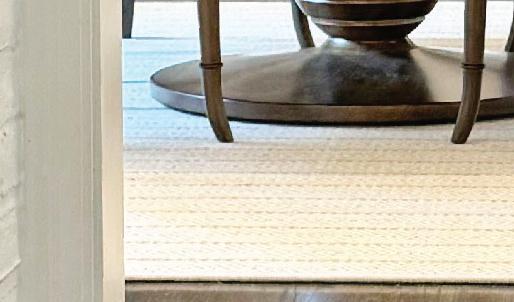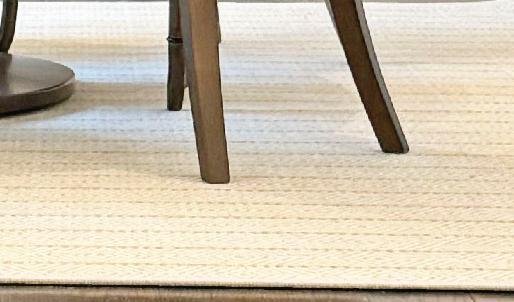“I’m a success today because I had a friend who believed in me and I didn’t have the heart to let him down.” - Abraham Lincoln
For many, the coming of September signifies the unofficial beginning of the fall season. According to shoreline rules, beach season has come to a close. If you are lucky enough to be a local you know that the“offseason” is New England in all her glory. We hope you had a great summer and are getting ready to begin your next adventure.
We are proud to offer up to you this installment of INK Publications. Here at INK we are coming up on a pretty significant milestone. This Decembe r will mark our 20th year of serving the Connecticut Shoreline. Each month as we set down the magazine, we are grateful to all those who look forward to picking it up and are appreciative of all the kind words we receive each month from our readers.
This issue appears to have ended up a worldly one. Matt and Lita Bondlow at Bale’in Stonington (and Providence) import some of the finest handmade furniture from Bali. The timeless design is amazingly simple, refined, and of course comfortable. Sara Drought-Nebel found and amazing piece of Jewelry on the beach. She could never have known that it would lead here on an Odyssey all it’s own. Breckin Morgan is a gifted painter and also an intrepid traveler. Clearly those two things compliment each other in beautiful ways. Carolina Marquez-Sterling offers up a thoughtful essay and also shares her recent visit to “The Mount” in Lenox Mass.
There is room at the beach, enjoy!
Contributors Departments
Laurencia Ciprus - editorial
Barbara Malinsky - editorial
Rona Mann - editorial
Carolina Marquez-Sterling - design
Advertising
Gregory Post - editorial
Nancy LaMar - Rodgers - editorial
A. Vincent Scarano - Photos
Deanna Simmons - editorial
On the Cover: Mccaw Photo b y Oleksander Antonov
Jeffery Lilly founder / publisher
ney the whole family Come on a jour
American Museum! Experience the s largest Native will love at the world’
e of the Pequot people, amazing cultur
e n about their distinctive r
elationship lear nabouttheirdistinctiver
e, their challenges, and their e with natur
. Our story lives on… . e inspiring r siliency
Profile by Rona Mann
Photographs Courtesy of balè
hen you’re young, home is a place you grow up wanting to leave, but as you mature and age, home is a place to which you want to return because it’s familiar, it’s comfortable, it’s your sanctuary.
This is a story about sanctuary and the people who have dedicated their lives to helping you find yours. It’s also about gathering. About friends and family and food and relaxation...and pure, unadulterated joy. A quick look at the magnificent images on these pages, and you won’t need these words for you’ll be voicing your own. At first blush, you might think this is all about furniture and design, and you wouldn’t be entirely wrong; but it’s the design that is the catalyst that takes you by the hand (and by the eyes) and leads you to the joy of sanctuary while at the same time celebrating the culture of beautiful, simple, yet breathtaking handcrafted furniture and décor and the difference it can make in your life.
It’s time to INHALE!
Welcome to Balè (pronounced bah-lay). If you think it sounds like some tropical paradise in the South Pacific – Bali - you’re definitely in the right part of the world. Bali is a province in Indonesia geographically located in Southeast Asia between the Indian and Pacific Oceans. It’s where Lita Bondlow’s story begins, but hardly where it ends. Lita, a petite woman with a delightful twinkle in her eyes, a brain in her head, and a warmth that’s extended to all she meets, grew up in this beautiful country with an archipelago comprised of


some 16,000 islands and 600 different languages. It’s the place that famed author, James Michener wrote of when he penned “Tales of the South Pacific,” based on much of his World War II experiences in the Southwest Pacific Theatre. It’s also the place that spawned the fictional island of Bali Ha’i made famous in the Broadway musical, “South Pacific,” although in the play that island was visible on the horizon but not reachable...it was only to be longed for in song. However, if you’re in Connecticut, Rhode Island, Massachusetts, New York, or anywhere in the United States, this vision is indeed reachable because this is the land of Lita Bondlow, and it has become the world of Balè
After attaining a college education with a degree in Tourism and Hotel Management, Lita left Indonesia, but not forever. A piece of her heart would always remain drawing her back to a land known for sustainably harvested teak that one day would become her life’s work. Lita first settled in California where she was employed by the Grand Hyatt Hotel in San Francisco, later moving across the country to New York where she used her considerable hospitality training to achieve success in a real estate career. Lita also found success on a dating app where she met her future husband, Matt Bondlow (“We eloped to City Hall!” Matt laughs), and they quickly became partners in business and in life. The couple began by selling pillow covers and throws at flea markets in Brooklyn on weekends, then slowly and purposefully they began to embrace the heritage from

whence Lita had come, expanding their reach in 2020 to handcrafted furniture and home décor for which Indonesia is widely known and revered all over the world. Marrying sustainability with functionality, the furniture from Indonesia is crafted by artisans using methods that have been passed down for hundreds of years within the same families. Balè does not deal in mass-manufacturing, for each high-end, custom-designed piece is crafted to order utilizing the finest teak and rattan in the world. Best of all, because Lita grew up in East Java, she knows many of these artisans personally, and both she and Matt travel frequently to solidify their relationships and to ensure that they are working only with the finest craftspeople in the country.
Handmade Indonesian furniture is all about exquisite craftsmanship, about beauty that is timeless, and about the feeling one experiences when one sees it and ultimately lives surrounded by it. The intricate carvings showcase the cultural roots of the country and its people with a serious emphasis on the use of responsibly sourced wood. The Indonesian government stands squarely behind the global demand for environmentally conscious products and the creation of a balance in nature so anyone who loves eco-friendly furniture design should look to Balè for products that are individual, naturally tough, durable, weather resistant, and long-lasting.


Lita and Matt look to those they know in Indonesia who source from the finest Indonesian teakwood that meets their high standards for beauty, quality, and sustainability. Balè is not one style nor one feeling. It is all at once rustic and traditional, it is minimalist and modern, but it is always uniquely yours. Balè is for indoor living and outdoor living, but above all, it is for simple, beautifully uncluttered, gracious living. It can be a rattan chair, a sturdy teak dining table, pendant lighting with exquisite handwoven rattan shades, or an entire home or business.
At this time, Lita and Matt invite you to either of Balè’s showrooms, one in the Velvet Mill in Stonington and the other on Westminster Street right in the heart of downtown Providence. You can check the website below to find out the hours they’re open, but a better idea is to call and make a personal appointment to sit down and meet personally, one-on-one with Lita and Matt, and let them get to know you, your style, and the way you live. The Providence showroom is staffed by talented RISD (Rhode Island School of Design) students supplemented by a healthy dose of expertise from a Brown University architectural student, so you know you’re dealing with people who know fine design.
Owners, Matt and Lita Bondlow
The artisans in Indonesia provide renderings, and clients work closely with Matt and Lita from start to finish. The end result is magnificent furniture and accessories that are carefully shipped in special containers across the world directly to Connecticut where arrangements are made to move the pieces to the home, the restaurant, or a commercial location. There is no middleman, Lita and Matt are your contacts from the first inhale of surprise and wonder to that last exhale accompanied by giant smiles.
This, then, is Balè. It’s simplicity. It’s beauty. It’s a product woven over many centuries that will give a whole new vibe to your space, a look that Lita and Matt want to show you, a look that world-class artisans of this country of 16,000 islands will create just for you.
This will uniquely be your sanctuary. Your very special place for family, friends, and your clientele. It will be a message you send out the moment they step in. Yes, this is Balè with little competition and no preconceived notions, just the finest at bringing the other side of the world to your door.
It’s time to EXHALE!
Come visit and see what an uncluttered, serene, beautiful atmosphere can mean to those with whom you share your life and those you wish to make welcome at your place of business. Balè, translated, means “to gather.”
And in any language, anywhere in the world, gathering brings with it, great joy.
www.balehomewares.com Check the website for hours at both locations or call to make a personal appointment to visit the showroom at The Velvet Mill in Stonington (park at the pond, and you’ve arrived). In Providence, practice inhaling and exhaling at 326 Westminster Street.
Starry Starry Night Tour Friday, 09.20.24 | 8:00 PM
Yes...Epics & Classics Featuring Jon Anderson and The Band Geeks Wednesday, 09.25.24 | 7:30 PM g | Friday, 09.27.24 | 8:00 PM
Sponsored By:
Find us on @gar Paula Poundstone Friday, 10.04.24 | 8:00 PM Manhattan Short Sunday, 10.06.24 | 3:00 PM
12 0 The Eastern Con The Nutcracke Saturday, 12.1 Sunday, 12.15 Natalie Macm Saturday, 03 Visit gardearts.org/events for additional upcoming Events and to purchase tickets
WEDNESDA
necticut Ballet Presents: r 4.24 | 1:30 PM & 7:00 PM .24 | 1:30 PM aster & Donnell Leahy 15.25 | 8:00 PM Menopause The Musical 2 Asking F Saturday, 04.19.25 | 8:00 Colin Mochrie & Brad Sher g or Trouble Sunday, 04.27.25 | 7:30 PM
One Night Of Queen Tuesday, 04.29.25 | 7:30 P | Wednesday, 04.30.25 | 7:3
to September 28,
Zufar Bikbov, Just Passing By, Oil, 18 x 24”
Kyle Stuckey, A Day in Paris, Oil, 16 x 25”
Jeanne Rosier Smith, Early Whisper, Pastel, 12 x 24”
Laura Westlake, Call the Plumber, Oil, 8 x 6”
“i “i
Feature and Photographs By Sara Drought Nebel
got a signal!” Rich yelled, but Paul was out of hearing range, off collecting mussel shells. Rich began to dig into the tidal pool, trying to outpace the swirling saltwater bent on keeping its treasure hidden. Finally, with Paul now digging too, the battle was won, and he pulled out the golf ball sized clump of barnacles.
Paul sighed. “Are you sure that’s it?”
“I think so,” Rich said, “there is no signal indicating anything else down there.” “Yep, there’s something in here, “ he said, running the device over the beeping white clump. “Won’t know what until I can get it out. I’ll work on it at home.”
As soon as they got home Rich began to carefully chip away at the barnacles, first revealing the metal surrounding, and then the opals and diamonds within the equal sided cross.
Rich loved to go metal detecting with his son. They found numerous belt buckles, old coins, jewelry, train chains, and various interesting historical artifacts over the years. They loved the excitement of uncovering things that had been lost in time, connecting them to history, and the people who last held these objects. He always asked permission before metal detecting near one room schoolhouses, town greens, antique homes and factories.
After carefully washing and coaxing the barnacle casing off of the artifact, Rich took it to a coin collecting appraiser that he knew, to have him examine it.
“I can tell you that these sandblasted opals are real,” said the appraiser. “Obviously in the water for a long time, but they are opals. The diamond is real too. (only one tiny diamond remained of the 4) Hand cut, obviously long ago. The metal is bronze. The patterns are very intriguing. The shape is interesting - an equal sided cross. I can tell you it is very old, but that is about it. I suggest you take it to a museum curator and see what they say?”
Rich took it home and put it in the drawer with the other finds, thinking he would someday take it to someone else. Time passed. The Opal Cross sat again, suspended in time. Ten years ticked by.
More about the cross later.
In the end of the movie, Titanic, the character who is searching for the Heart of the Ocean realizes that it is not the jewel that is the precious treasure. It is the human story. The story of the tragedy from the survivor who is the only remaining source of the experience. Mined from her
memory. She dies in the end, but after her story is passed on, it lives. The Heart of the Ocean diamond is worth a lot of money, something that humans value, which is why he was searching for it. But really it is just a mined, carved, shined rock. A volcanic remnant. A piece of earth’s history. Then people dug it out, polished and cut it, shined it and it became a “valuable” jewel. A rare jewel.
Think about the gold rush. When gold became “valuable”, people searched far and wide for it trying to find it and cash it in. They made it into jewelry. It was the foundation of the value of the money that we still use, though “money” has become different over time with land ownership, credit cards, debit cards, investments, and bitcoin, making the concept of money even more of an illusion. It all started as a trading device. Finding and collecting old coins is a favorite hobby for many people.
In the movie Message In A Bottle, divorced writer Theresa finds a vintage bottle in the sand with a note that leads her on a romantic journey to find the author of a love letter tossed into the sea.
When one uncovers an object made by someone, a tool, a gem, a bottle, ceramic vessel, letter or piece of art - something made by the hand of a person who lived long ago, we are instantly connected through time. Though we cannot talk to that person, like he did with Rose in Titanic, we can imagine the story. The story of how it was created and why. We enter a real time machine - an adventure of imagination.
We recently found a show on YouTube called “Dirty Secrets of Scotland”. Musician Willie Scott digs for bottles and metaldetects in Scotland on its historic islands. It is so fun to watch when he gets excited about finding, cleaning, researching
and telling about the histories of the objects he finds.
My sister sent me a photo that she took of a man on the beach with a metal detector and a parrot on his shoulder. And, walking the vast beaches of eastern FL on the Atlantic “Treasure Coast”, she has found 10–20-million-yearold fossilized black shark teeth!
Friend and artist Hannah Smith has found many historic treasures with her dad. She said too that the history of the objects they have found is the most interesting aspect of the search. And the fun of sharing the experience with her dad.
We can also enjoy the history of antiques, furniture and the belongings of people on our family tree. I have the carving tools that were used by a renowned sculptor in my late husband’s family. A very old croquet box, a beautiful kitchen island made of hardwood that originally came with a full set of encyclopedias. An old handmade workbench, a toolbox with ancient tools and other mysterious boxes. Letters and limited edition signed novels written by my father. Things that take me back through time.
Back to the Opal Cross—
Rich has said many times that this is the most fascinating artifact he has ever found. He knew it as soon as he saw it. But it wasn’t until 10 years later that he had the ability to research it with the use of the internet. It could have been lost again during that decade, and it wasn’t. It is tiny! Only about an inch and a half in its length and width.
After looking at pictures of it, I asked Rich where it was. Happily, Paul still had it. We did a little research, and we began to imagine the possible journey of this amazing little artifact.
A bronze Greek Cross with five murky ocean sanded-green opals and four (one remaining) tiny diamonds. On the reverse side, some symbolic swirls. When we discovered that this little jewel was in the exact shape of the St. Mark Basilica in Venice, with the opals exactly where the domes are, and diamonds where the steeples are, showing the exact footprint of this historic cathedral, we were mesmerized and launched into an adventure of history and imagination!
On the internet we found a story about the Evangelist, St. Mark. After he was martyred in Alexandria, he was laid to rest in the basement of the Cathedral there. Many centuries later when there were plans to build a Basilica Cathedral in Venice, dedicated to St. Mark, pirates came to steal his bones in a well-planned heist in the dark of night. They quietly rushed his remains to their ship and made their way out to sea. They said that when they almost capsized in a fierce storm, St. Mark came to them and showed them exactly how to save the ship,
rescuing them from certain demise. This dramatic story was their evidence that his Spirit was supporting their mission and blessing the new Cathedral.
Could this little gem have been a gift to St. Mark while in Alexandria, and among his remains that were carefully placed in the St. Mark Basilica Cathedral in Venice?
Maybe this little cross made its way from the robes of Saint Mark to basements of Cathedrals, in the bellies of treasure chests on pirate ships from Cyrene to Alexandria, to Venice, to Rome, to Iceland and Greenland with Erik the Red, to Maine with Leif Eriksson, and down the Atlantic in the many merchant ships that sailed there. There are fascinating stories about shipwrecks of pirate ships in Connecticut, on their way to New London, Milford and the Thimble Islands.
After one of these wrecks, perhaps the little jewel gathered barnacles on the Sound floor and began to roll with the tide, ending up in a tidal pool in the rocks on this Connecticut shoreline…and was buried in the cavern of rocks by swirling salt water for centuries until Rich and Paul found it that day.
Now here it sits, as a key to a story from the past. The story of St. Mark, an historic Cathedral in Venice, pirates and a journey of imagination.
A message in a bottle rolling on the waves in the sea. A human story in a clump of barnacles tumbling across the ocean floor. The Heart of the Ocean. The Journey of the Opal Cross. Bottles, gems, tools and treasures underground. The digging, the searching, the finding continues.
Endless histories, mysteries and stories are yet to come.
Sara Drought Nebel is an artist/writer who lives on the Connecticut shoreline. She is a contributor to Ink Magazine and works at Lyme Art Association. Find her works on Facebook, Instagram and at justplainart.com
Debra Lee and Friends
“Visions Unveiled”
September 9 - November 29
Reception • Wednesday, September 18 • 5 - 6:30 p.m.
860-358-6200 + info@midhosp.org + MiddlesexHealth.org Visit the gallery at the Shoreline Medical Center
“Visions Unveiled” promises to be a captivating exploration of creativity and expression, showcasing the diverse talents of three women artists: Michele Fox, Debra Lee and T. Willie Raney.
For more information, visit MiddlesexHealth.org/Visions
250 Flat Rock Place, Westbrook, CT 06498
Debra Lee, MyRedBoots,oil (detail)
Grooner, White Wine from Austria
I can say with great certainty that the cliche of time being a thief, flying by, or whatever the expression you resort to can be quite accurate. When it comes to the greatest joy and challenge of my life, the journey of parenthood has been a blur of naps and walks that feel inconsequential at the time, but mean more than I would have ever guessed in hindsight. As my household prepares for the first fall where we are processing a ”back to school list,” I feel helpless against the tide pulling us towards the sea. It is exciting and terrifying, quite the combination of feelings. Times like this demand a beverage that signals excitement for a new beginning. In this case, it called for Grooner, by Weingut Meinhard Forstreiter.
This month we delve into this audacious Austrian chilled wine made from 100% Grüner Veltliner.
It is all the right late summer vibes pressed into one artsy bottle. This wine was designed to jump off the shelf and into your cooler, everything from the bottle art to the liquids inside is ready for your review and revelry. As it is still quite warm out, the denser vintages out there are not yet right for the occasion. It IS still summer after all, even if the academic year has pulled some of the participants in the season from the sea to the schoolhouse. So, rebuff the pumpkin beers and overoaked Chardonnays as long as you can! Let this wine help you capture the end of the summer with notes of apples as green as the grass you just mowed.

Grüner Veltliner is the pride and joy of the Austrian wine scene. It is a white wine varietal which is the supposed child of Traminer and most likely St. Georgen. It is a grape that fills in on the vine with both size and density of distinction. It can become prolific in the right conditions, so much like a child ready to take off without their lunchbox, it needs to be carefully guided. It is sensitive to drought, and the sunshine afforded will ultimately place the rendered juice somewhere in the spectrum from fruity to spicy, with pronounced acidity. You are in for a treat with Grooner, in that this is a version of this vintage that hits all of the high notes. It is a feisty “almost fall” feature with a big Granny Smith bouquet that almost leaves you unprepared for the zesty bite the first sip delivers. Clean and concise, this is a wine that gets the assignment. If you are in
the market for a mid-range priced bottle of wine to slide into the normal Pinot Grigio or Sauvignon Blanc slot for your next gathering, look no further than the label with a lady literally calling out to you as you stride down the aisle. To me, this wine would be best paired with cheeses and charcuterie aplenty (see the Cheesemonger’s article for a possible playdate), or with a lighter entree like a round of fish tacos at your favorite seaside hangout. This wine has enough white pepper to be served with anything that you are hopefully harvesting from your garden, with grilled asparagus coming to mind for some reason. It has a screw top, so picnic or boat ride ready, and at a price-point that is benevolent to your budget to boot.
While carrying my eight-month-old in the car seat in between errands, this wine was recommended in a pinch by the new shop manager of Cove Ledge Beer, Wine, and Spirits, in Stonington Borough: Kelsey Ferguson. A veteran of the greater Mystic beverage scene, she has jumped into the transition for the most beautiful package store on the East Coast with great enthusiasm. Along with new owners Brian and Allegra Griffiths, she hopes to build upon the already remarkable reputation of the Cove Ledge brand in the food and wine capital of the Constitution State. Whether you are staying in “the Borough,” or just passing through on your
New England coastal campaign, make a point of popping into the Water Street beverage headquarters, you will not leave disappointed. Make sure you say “hi” to my ‘niece’, Kelsey! I am a Leo, so for me, summer is the pinnacle season. I fight for every second of sunshine and embrace even the most humid of days by simply looking at my phone for photos from January and February (why is everything so gray)? Even if you love the fall, and who doesn’t in NewEngland, there is a certain alarm that the changing of leaves sends to my synapses. To that end: there is still sand in the hourglass left to enjoy the sand under your toes, so please try to kick off your shoes for awhile and embrace it before you are busy with a rake in one hand and a pumpkin to carve in the other!
Gregory Post is a manager at Saltwater Farm Vineyard, affiliated with Kingdom of the Hawk Vineyard
Original
Last Open Mic Night“The Art of the Eve Opening Reception S
Original Fine
Silks & Weaving
Soaps/Candles
Tables/Benches
Needle Felting
Stone Sculpture
Cutting
Boards
Everything here is made by LOCAL artists and artisans. ything here is made
Earrings/Jewelr
ArtisticFrames
For many years I’ve mulled over what drove Ahab’s relentless anger in Moby Dick? Occasionally, I would light on an answer when I felt that similar pursuit in my professional or social life. Recently, I have begun to revisit this inquiry. I have pondered what triggered Ahab so thoroughly that it provoked such tenacious fury, a deep-seated rage. “Definitely Monomania!” As the tale unfolds and is told from the perspective of a lowly crew member, Ahab’s deepening anger seared my mind. I could not reason why this was again occupying my head space. I now had two mysteries to resolve: Why is Ahab so angry, and why am I thinking about it again?
I decided to find the book and understand why Ahab had such a hold on my thoughts. As I delved into the text, my thoughts began to evolve. That elusive white whale seemed to have a grip on me, and it
I chose what I now understand to be a more egoic voice. As a child, I could see that they led to very different outcomes. Sometimes fortune, sometimes mess.
Since those early days, I have tried to reconnect with my mind. “I appreciate you, brain. You have helped me many times, but my mind knows better—it knows everything better.” Our brain is the physical organ in our head. It’s responsible for acing tests, managing finances, and getting you to work on time. Your mind is the function that observes all this and tells you when the test answer is wrong and points out the correct answer. Your mind also alerts you to errors in your finances, even when everything seems correct, or it might prompt you to stop at a farm stand before work, ultimately helping you avoid a major traffic jam. Some call it a sixth sense, an intuition, a gut feeling illogical to others, but you can’t help but heed the suggestion—a hunch. I used to hear hunches well. And not just listen to them but pursue them. In those years, I considered myself lucky. I realize now it was the hunch directives that made me so fortunate. Part of successfully following a hunch is letting go of expectations about the outcome. It means surrendering your ideas and letting the hunch serve up what you truly need rather than what you “think” you need. It’s an all-in bet.
was intriguing as it started to unravel deep within me. Melville had so beautifully woven a tale that I had always viewed it from a literal standpoint as if it were the battle between man and beast or man and nature. I never considered it a possible metaphor for the struggle within oneself. When this thought occurred, my hair stood at attention. I knew I had finally found the answer to why it had captivated me once again.
I always sought to understand myself. As a young person, I remember wondering why I did or said certain things or why I didn’t. The mind, a quiet voice within, has a very different function than the brain. I recall my mind urging, guiding me gently toward certain things. Sometimes, I listened to its wisdom, and sometimes,

You may be wondering, “What does this have to do with Moby Dick?” I sometimes struggle between following my intuition or listening to my ego-driven brain. Following our intuition is easier when we’re not concentrating on pleasing others or some inner torment or an embedded belief that tells us we must follow that course. I feel the tale of Moby Dick represents that anguish—that struggle. Follow your hunch, an unknown, or keep pursuing the road that lays out before you, that has become an obsession. Intuition often dwells beyond logic or common sense. So, we push it aside. I recognize it as a heartstring—a strong pull at the heart. The heart/mind and the brain don’t always meet in the middle. It is fantastic when it does, but they are often at opposite ends.
The mind is the heart’s brain. When you listen to intuition, that unique frequency, the heart grows bigger and emerges from the dark corners of the self. And when you practice following your heart consistently, it arises out of the depths within and, like Moby Dick, crushes the ship, symbolizing the egoic brain. I am not saying that the thinking brain is a useless, selfish process, far from it. The brain is the ship that keeps you afloat, that has helped you make sense of the occasionally senseless things that happen to you and the world around you. The thinking brain should be respected in its own right. Without it, I might have
perished many times in my life. However, for some of us, it can be a tyrant. Turning longings into fixations that, if not followed, will cause significant discomfort in the sensation of failure. The thinking brain is human consciousness, and the mind/heart is higher self consciousness.
We all grapple with this paradox of duality, whether we acknowledge it or not. Ahab was fighting against his intuition. The more elusive, the more robust the compulsion became. Some argue that logic, which is the brain’s territory, should have presided. But even logic (Starbuck) is tossed overboard when the egoic brain desires something.
Ahab could have stopped. First mate, Starbuck, attempted to stop the madness. Did he serve as the mind urging him to cease? How about Stubbs, who is a nihilist? Was he symbolic of Ahab’s egoic brain? In a metaphor, it sure could be. Was Ishmael another part of Ahab’s character? Three main things happen at any moment: our experience, the Awareness of that experience, which is more subtle, and the story of that experience. For example, we see the whale and chase it. (experience) We know we see the whale and are chasing it. (awareness) The whale was enormous and almost killed us. (story) Ishmael, the storyteller, is the only one who survives the onslaught of this battle. Is Awareness the gift of the war of duality within? Will the brain remember it for future reference and deny the mind’s wisdom?
For thirty years, I have been pursuing a career as a fine artist. I have chased this dream into obsession. I had come to define success in egoic terms - notoriety and finances. Then, a sorrowful event boarded my boat, nearly sinking it. Since then, my ship has been in irons, and my sails are luffing. Any artist knows that creating something can transport you from human to higher consciousness. If I’m honest, I do it for the exalting nature of that transition. One evening, while struggling with my brain over not producing enough, I heard my mind: “Let go of the chase.” Viola! My heart rose from suffering into a delicious, satisfying consciousness.
The idea of duality is widely expressed collectively in this current era. What is interesting is that you cannot exclude one from the other. We must attempt to integrate this duality within ourselves into the greater whole. Could this help the collective find some serenity and peace? It is said, “Think globally, act locally.” Could this same concept be applied to us as individual beings?
If we all had more Awareness and less Story about our experiences, we could have a whale of a fighting chance.
Profile By Sara Drought Nebel Photographs Courtesy of Brechin Morgan
In the early 1980’s I was going to art school, zipping around in my twilight blue Volkswagen bug and frequenting bars - Donovans and Appaloosa, in the newly revitalized South Norwalk (SoNo) CT Seaport. Learning the two-step and riding the mechanical bull during the country/western craze from the movie, Urban Cowboy. I was 20 years old.
One summer night, I went to meet my friends at Appaloosa. It was still light, and I decided to walk around before I went in. Around the corner of Donovans I saw a huge majestic painting on the side of the tall brick building. The signature on the bottom corner said “Brechin Morgan”. It looked historic, as though it had been there for a long time. This mural made a big impression on me.
Fast forward 40 years.
I am sitting at the check in table at Lyme Art Association during entry for our maritime show, Ship to Shore.
I looked down at an inventory sheet someone had just handed me and saw the name “Brechin Morgan”. The sailboat mural that had stopped me in my tracks 40 years ago. “No…. can’t be.” I thought. I looked up and asked, “Are you the Brechin Morgan who painted the sailboat mural in South Norwalk?”
“Yes!” He said, smiling. I was shocked. “You are like my age!” I said. “How could you have painted those murals??” He laughed.
The adventure begins. Brechin Morgan was born in New London, CT in 1947. His family moved around CT, finally landing in his preteen years, in Guilford, near the water. Brec is one of 4 children. He has a sister and 2 brothers.
When Brec was very young his parents took them to Mystic Seaport. They watched a film about Charles W. Morgan. It made a big impression on 7-year-old Brec.
Proposed Mural Panels, Donovans Alice Mural Restoration Original
“When I am 11, I am going to sea on a whaling ship like this, as a cabin boy.” Brec told his mother. She explained to him that there were no more whaling ships, but this did not deter him. Brechin was his Scottish grandmother’s maiden name. His dad’s grandfather knew Joshua Slocum, the first person to single handedly sail around the world, and Brec’s grandmother met him. Slocum gave her a bottle of shells he collected from his trip. She handed them down to Brec and he still has them.
The past circles the present.
Brec’s dad studied Engineering at the University of CT on the GI Bill, and the family lived in GI housing in nearby Willimantic. His dad then went into sales and with an entrepreneurial spirit, he started businesses, built them up and sold them. Both of his parents were very artistic and inventive and passed these traits on to him.
Brec’s mom introduced her husband and their children to sailing and she was also a watercolor and pastel artist. As a young lad he saved his paper route money to buy a sailboat, a Blue Jay, and he was hooked. When Brec was 16, he dropped out of school and headed for New York to begin his artistic (and traveling) life.
While working as a stock boy in the textile district he met a beatnik guitar player named Rick and started playing guitar. He and Rick decided they would hitchhike west. They met up with a trucker in Georgia who was Texas bound and fortunately rode with him all the way there. They ended up in Mazatlán, Mexico, south of Baja, and hung out on the
WHEN I AM 11,
I AM GOING TO SEA ON A WHALING SHIP LIKE THIS, AS A CABIN BOY.” "
Fishing Boat, Massawa, acrylic 42 x
beach. When their savings ran low, they went to Rick’s house in Manhattan Beach, CA. There he met Paul Goldsmith, Rick’s cousin. The three of them hitchhiked east, washing dishes to pay for meals.
“Somehow we always managed to eat and keep going!” Brec said. “But I always kept a dime in my pocket for an emergency in case I had to call my dad.”
Interestingly Paul Goldsmith later worked as a cinematographer with Bob Dylan.
After returning back east, Brec attended Silvermine College of Art while working odd jobs. He was working at a Shell station in the wintertime when a girl pulled in for gas and they started throwing snowballs at each other. He and Maryanne were
married two weeks later! She was divorced, a few years older and had a four-year-old son.
Brec knew that he needed a steady job to support his new family. He worked in construction, for a tree surgeon, an ad agency and apprenticed with a sign painter. He was 29 years old in 1976 when he started the Morgan Sign Company, in South Norwalk.
He had an idea for a mural for the historic seaport and approached City Trust Bank to sponsor it. A painting up high on the side of Donovan's brick wall of a sailing ship that would well represent the Seaport. He settled on The Alice Wentworth. She was built in East Norwalk in 1863, and first named The Lizzie A. Tolles, but she was sold to a merchant from Maine, rebuilt in 1904 and renamed for his favorite niece.
Tug McAllister Girls in the Est River, 36 x 36
The entertaining stories of and by the captain of the ship are on Brec’s Facebook page!
“Regarding the mural in SoNo, I have always felt that as The Alice’s birthplace, the mural is a commemoration of that singular long-lived and legendary schooner which should be remembered as a storied part of our New England maritime history.”
Brec has always cared for his murals and is still trying to preserve them for future generations.
Brec and Maryanne had 2 children of their own, a son and a daughter, who are in their 50’s now. They have long since divorced but remain good friends.
Then Brec met Sandy.
“When I met Sandy, we were both in a Mime Group. Yes, that’s what I said, a Mime Group, you know like Marcel Marceau? We were in a bar one night and she was telling Irish jokes, with an Irish accent! I mean, what is better than that!? I was in love again!”
Brec and Sandy are still happily married after 38 years.
Since his early childhood, Brec had the dream to circumnavigate the globe on a sailboat. He still treasured his bottle of shells handed down to him from the first solocircumnavigator, Joshua Slocum, and while making signs and managing his very successful sign company, Brec was painting on the side.















In November of 1998 he and Sandy made a plan. They had a big fundraiser and about 450 people came. He had a giant 4’ x 6’ sign-up sheet that people could sign to purchase a watercolor from anywhere in the world on his voyage. Sandy managed the list from home. These purchases would “keep wind in his sails”. The budget was about 600.00 a month. He took the “Coconut Milk Run” across the Pacific from Panama to New Zealand. All the while drawing and painting, sending the images back to Sandy, who would match up the painting to a person on the list. He was always surprised to find in the newly electronic world that his ATM card would work in the remotest locations, discharging local currency converted from his account a half a world away.
He was making art for himself too and keeping meticulous visual and written Journals. People offered to buy these paintings along the way, but instead he made copies to sell so he could keep the original paintings in his expanding collection of sketchbooks and journals.
Voyage Sketchbook Paintings, Watercolor
A serendipitous meeting happened early on in the Panama Canal. Brec met Howard Park, another CT artist/sailor who was circumnavigating the globe with his wife, Rita! They met again in Tahiti, Bora Bora and New Zealand, and have remained good friends ever since. Recently, Howard Park shared his experience in a packed house-lecture and slide show at Lyme Art Association. We will schedule one for Brec too in the near future.
The past circles the present, again and again
When Brec returned from his vast 4 ½ yearlong sailing adventure in 2003, he had traveled 32,000 miles, and visited 32 countries. He opened his painting studio in the American Fabrics building in Bridgeport, and has been building, and showing, a body of work ever since. He has had solo shows, won awards and currently just finished an invitational Guest Artist Residency at Mystic Seaport.
When I think about Brec and his earth-circling painting trip I think about what astronauts have said, who have seen the earth from space and the moon. This miraculous swirling blue and white marble that contains all that we know and love, spinning through
Passing Squall in the Tuamotus, acrylic 48 x 48 Brechin Morgan
Morgan, Brechin Working the Beds off Milford, acrylic 30 x 40
black infinity. I imagine seeing it in its totality, looking back at it from afar. Humans have inhabited this planet for such a short period of time really, and we are so lucky to be here.
Brec and I spoke about this too.
It has been 20 years since his trip. He has had time now to turn around and look back at the blue sphere he navigated alone on his sailboat, the 27-foot cutter named Otter, and reflect on the earth he saw, sailed, wrote about and painted so long ago.
It is time to write the book.
See Brec’s Facebook page for great stories and the paintings documenting his trip. There is a first book on Amazon based on Brec’s emails sent to and edited by his brother, titled “We are All on the journey”. He wants to revitalize his historic mural in South Norwalk, perhaps sail on the Charles W. Morgan again, crew on the Coast Guard Windjammer, the Eagle, and write the book. Find Brec and his work at his website, www.brechinmorgan.com, on Facebook and Instagram @BrecMorgan, or email him at - brecmorgan@aol.com
Above Clockwise: Mural 1115 Broad St Memories of Melville 30' x 40', 2023, Brechin Morgan in Oaxaca, Mural 78 Elm St NEVIS 18'x 65',2023
got to The Mount early. I was excited to explore the place with a friend I had not seen in a long time. The Mount is writer Edith Wharton’s impressive home in Lenox, Massachusetts. Wharton purchased 113 acres in Lenox in 1902. She built a house that reflected her interests: novelist, gardener, hostess, and interior designer. The word home does not capture the grandeur of The Mount - it is more of an estate. Elegant, graceful gardens with enchanting wooded trails surround the white stucco home. Edith and Edward Wharton lived at The Mount from 1902 to 1911.
Edith was born in 1862 into wealthy New York’s high society. During that time, women were discouraged from pursuing anything beyond marriage and homemaking. Despite societal expectations and pressures, Edith struggled to live a traditional life. In time, Wharton overcame these restrictions to become one of America’s greatest prolific writers and the first woman awarded the Pulitzer Prize for fiction. She authored The Age of Innocence, Ethan Frome, The House of Mirth, and another 37 books. Thanks to Mrs. Hyde, my high school American Literature teacher, Ethan Frome left an indelible mark on my perception of a good story. Edith’s courage and unwavering determination to overcome the constraints of her period is remarkable. Not surprisingly, her novels and stories have become classics of American literature.
You can view the house’s stables by approaching the ticket booth from the parking lot. My friend remarks, “The building underwhelms me.” I chuckle and tell her those are only the stables. She smiles in acknowledgment of what must await us. The stables are two stories high and have a Georgian influence. Initially, it served as a shelter for the horses and carriages and, later, as a garage for Mr. Wharton’s cars. I had the opportunity to see some of the private areas and found them fascinating. The stalls were transformed into grounds-keeping, tool sheds, and a workshop
for the estate’s upkeep. The upper floor housed the coachmen, his family, and the other male employees. The Stables now serves as The Mount’s primary cultural programming space.
Several trails lead to the estate, but we followed the house’s primary entranceway—a dirt drive that winds comfortably to and fro until you arrive. Nothing can prepare you for the magnificent size of this home. It radiates against a juicy green backdrop. Architects Ogden Codman Jr. and Francis L.V. Hoppin designed the house, with classical influences as the source of inspiration. A white-walled forecourt surrounds the entrance. The protective forecourt allowed carriages from the early 1900s to drop off riders at the door and return to the stables.
We opted for a self-guided tour. I wanted to meander and understand Edith without all the details mugging my mind. Stepping through the main entrance, I felt transported to a different era and lifestyle. The gilded age of Edith Wharton’s life is apparent in the long, luxurious foyer. A table with fresh-cut flowers, likely from the surrounding gardens, adorns the center of this grand hall. There are several sofas of the era that visitors are welcome to sit on. Signage directs us to the upper level via a grand marble staircase decorated with wrought iron railings, adding to the modest opulence. The surrounding pale-yellow color encourages a bright and cheerful environment.
The first room we encountered was an entirely furnished dining room with all the regalia for hosting and entertaining, including a table set for six. It feels light and airy. My eyes move from corner to corner, eager to take it all in. The entrance to the Butler’s Pantry is to the right of the room. It stored the china, silver, and linens and served as a staging area for meal service, with a dumb waiter bringing up the food from the kitchen. My mind wanders to the conversations at the table. Edith must have drawn significant details from her life and sharp observations for
her books. In The Age of Innocence, later adapted into a movie, the dining scenes are captivating, accentuating the era’s tension on sexuality, societal issues, and family dysfunction.
Opposite the table is an immense terrace stretching across the main floor. It now serves as a cafe for visitors. From this perch, you get a fantastic view of her gardens. To the left of the dining room, you are treated to a spacious living room or, more appropriately, the drawing room. A quote from Edith suggests a drawing room should contain paintings, prints, and objets d’art. The ceiling is a demurely ornate plaster in white that brings luxury to the forefront.
The next room we experience is Wharton’s library, Edith’s wheelhouse. It is a beautiful, serene place for a Bibliophile. I can feel my friend’s energy rise as she views the shelves stacked with books and manuscripts from a bygone era. The warmth is palpable, with wood as the primary substrate. This is the only room in the house that is cordoned off. I later discovered that visitors, book lovers, and scholars can book a private tour of her library for a fee. This gives a peek into Wharton’s personality and interests. The library contains inscriptions, notes, and markings by Wharton and two original editions of Leaves of Grass by Walt Whitman. A long-time friend and confidant, Walter Van Rensselaer Berry, gave her one edition at age twenty-one. The artifacts are housed in a case in front of the cordoned room. I am fascinated by the presence of these items but also feel a sense of dread (my mind ruminating over my own journals) as I probe her private world with my eyes.
We head to the upper floor to view her bedroom and more private living spaces. I read online that the most significant room in Edith’s house is her bedroom suite. It was in this space where Edith wrote several of her books. The boudoir, my least favorite, was the room where she would handle household business and visits from close personal friends. It is a pastel green with red ruffled toile fabric curtains and matching upholstery. Finally, we glimpse her bathroom, outfitted simply with a tub, sink, toilet with a water tank above, and vanity table.

Several rooms are devoted to exhibitions. One room honors Edith’s life in France as collected by French scholar Claudine Lesage. The room’s windows are used cleverly, with large photographs of Edith printed on the shades’ back-lit by natural light. A second room is dedicated to Edith’s charitable and humanitarian work during and after WWI. Unlike many others, she never withdrew to safety. She was one of the few journalists/writers allowed on the front lines. This action earned her the Legion of Honor Award in 1916.
The Mount’s forecourt and ground floor entry way.
“Staunch and faithful little lovers that they are, they give back a hundred fold every sign of love one ever gives them–& it mitigates the pang of losing them to know how very happy a little affection has made them.” Edith with Miza and Mimi, photo by E. F. Cooper in Newport, Rhode Island.
Butler’s Pantry
Set for six, the dining room with the terrace through the windows.
The drawing room and the ornate ceiling details.
Edith’s Bedroom
Edith’s boudoir where she did household business.
And yet another tiny closet-like room displays magazines (copies) from the early 20th century. I could have spent an hour if a comfortable chair had been available. The ephemera of the era are mesmerizing and provide fascinating details on cultural matters for women of the time, illustrating just how marvelously modern, undaunted, and brilliant Edith was.
Up next is the servants’ area. The whole right wing of the house is reserved for the lives of those who worked for Edith and her husband. A separate set of stairs and the modern convenience of an elevator carry the owners’ luggage. There is also a sewing room, a linen closet, and a closet for Edith’s dresses. Small details abound in these quarters, such as an electric bell letting the servants know who was ringing for their service. A placard of pecking orders shows who is at the top in service. The refrigerator boxes provide a glimpse into the food preparation. The kitchen is glorious at any age, albeit missing today’s modern conveniences. However, unlike today, when everybody ends up in the kitchen, the only people are servants—peeling, chopping, plucking, and preparing the meals for the day. With the added scullery, this would be the original farm-to-table dining experience.
The restored gardens include an Italian walled garden, an alpine rock garden, and a tree-lined limestone path to the formal garden. All are handsome and have seating for contemplation. The wooded trails are carefully curated with periwinkle ground cover, ferns and grassy knolls creating a mystical atmosphere.
As I wander through this historic, glamorous, understated for its time, home and later the gardens, and pet cemetery situated on a knoll not far from the house, I can feel Wharton’s distinctive spirit just as I sense the impact of The Mount on Edith Wharton’s extraordinary life.
The Library Edith’s wheelhouse.
The Library-To the far left of photograph you can see her sitting at her desk.
An unfortunate event punctuated my visit. Upon arriving, I stepped out of my car to text my friend I had arrived and would wait for her in the parking lot. Next, I realized I had locked my keys in the car, with everything but my phone. Now what? After several attempts to reach Triple-A and a few unwharton-like words, I asked a groundskeeper, Patrick, for help. During my uncouth, quiet expression, I lowered the driver’s window, allowing a half inch for a potential break-in. A fellow employee, Steven, had the ingenuity and tenacity to use heavy gauge framing wire to hook my keys like a contest at a local fair off the center console, allowing me to press my finger on the security buttons to open the doors. I mention this because those employees and the subsequent attendants at the cafe and house were helpful and cheerful, adding to a joyful experience at Edith’s home. Edith Wharton would be pleased.
Located in the Berkshires close to Tanglewood, The Norman Rockwell Museum, and Arrowhead. Herman Melville’s home. The Mount is open daily 10 am - 5 pm, May 20 – October 31. The grounds are free and open daily from dawn to dusk unless posted. For more information, visit: www.edithwharton.org
The kitchen
View from one of the many wooded trails surrounding The Mount
Early Spring formal garden with view of limestone pathway





